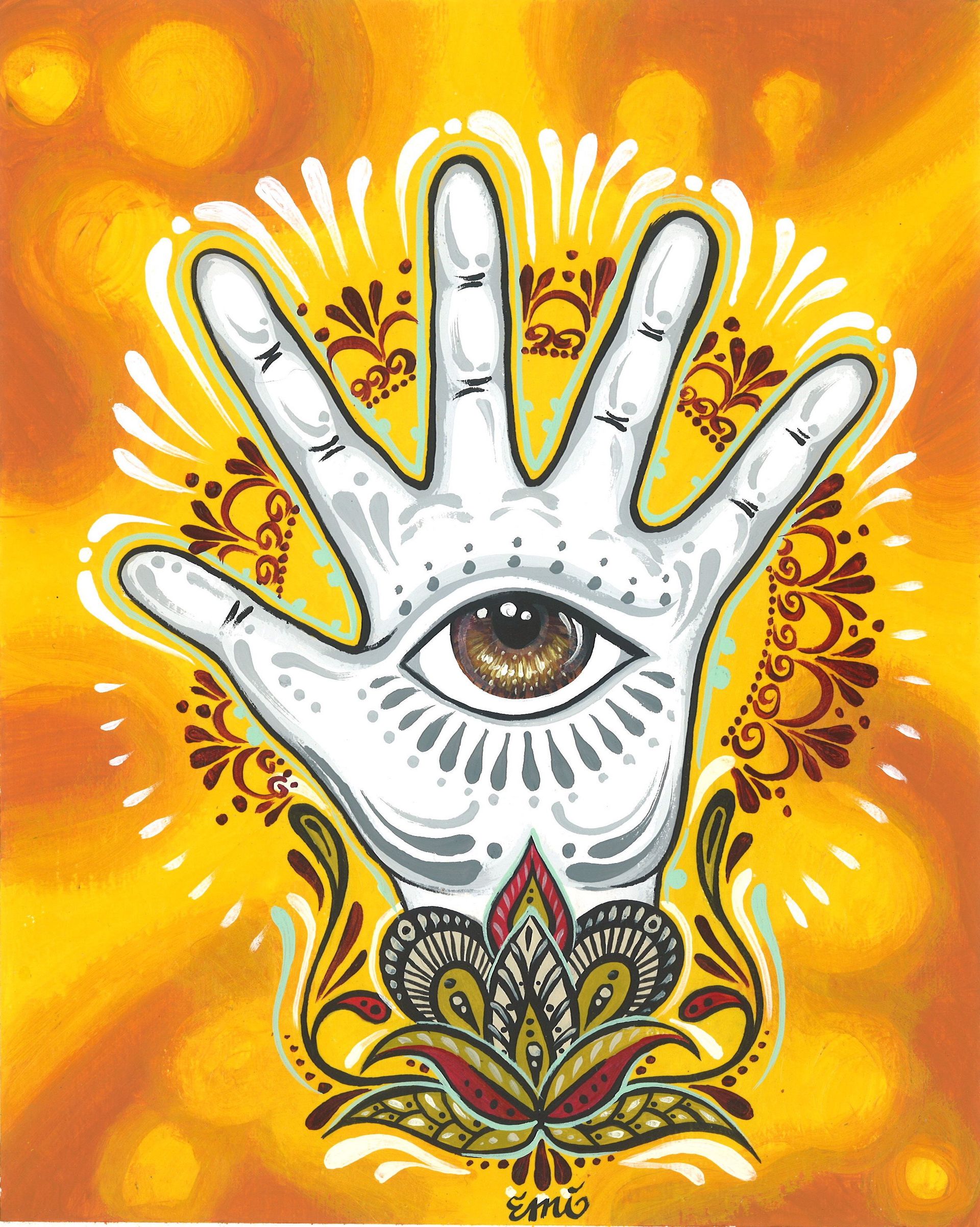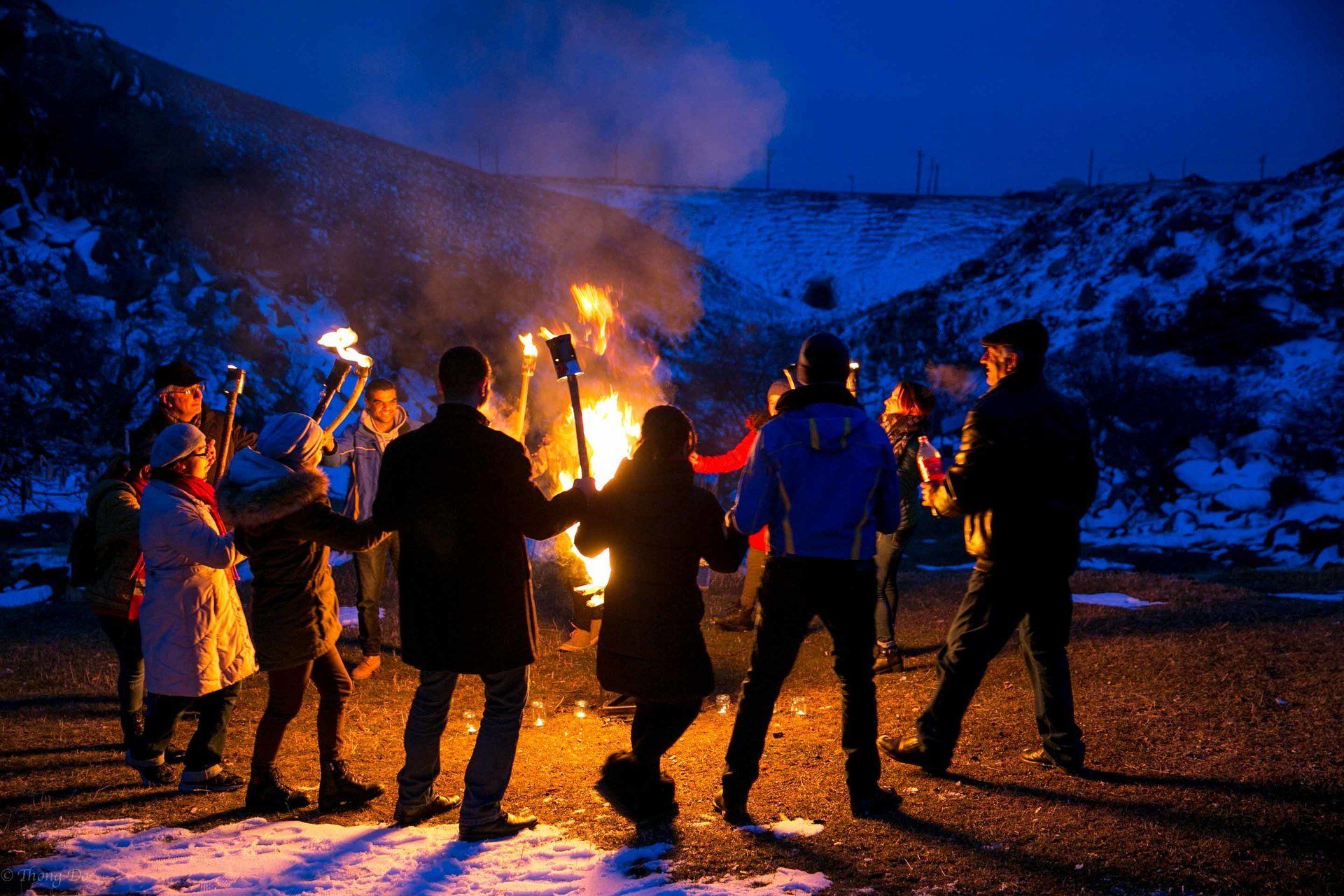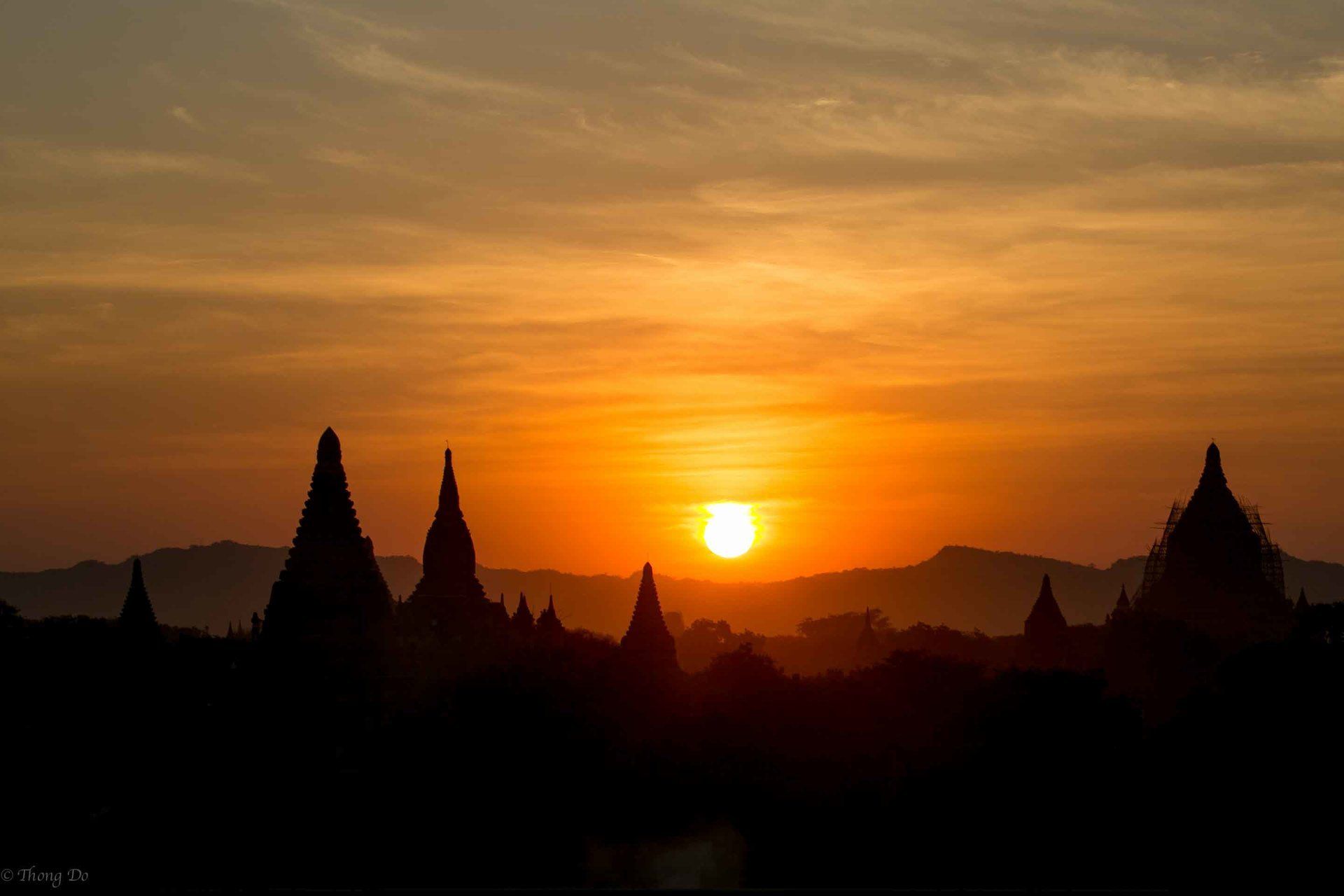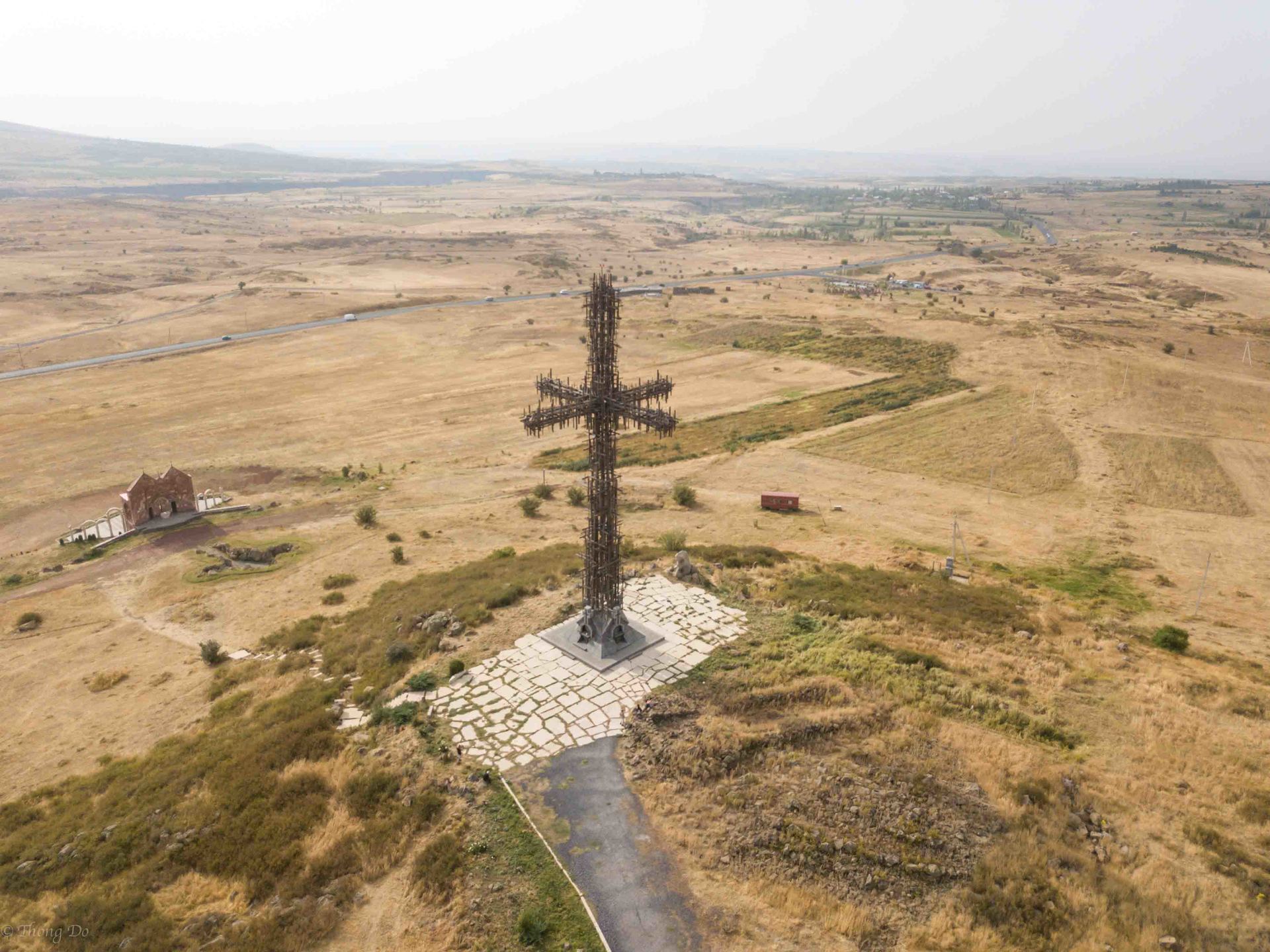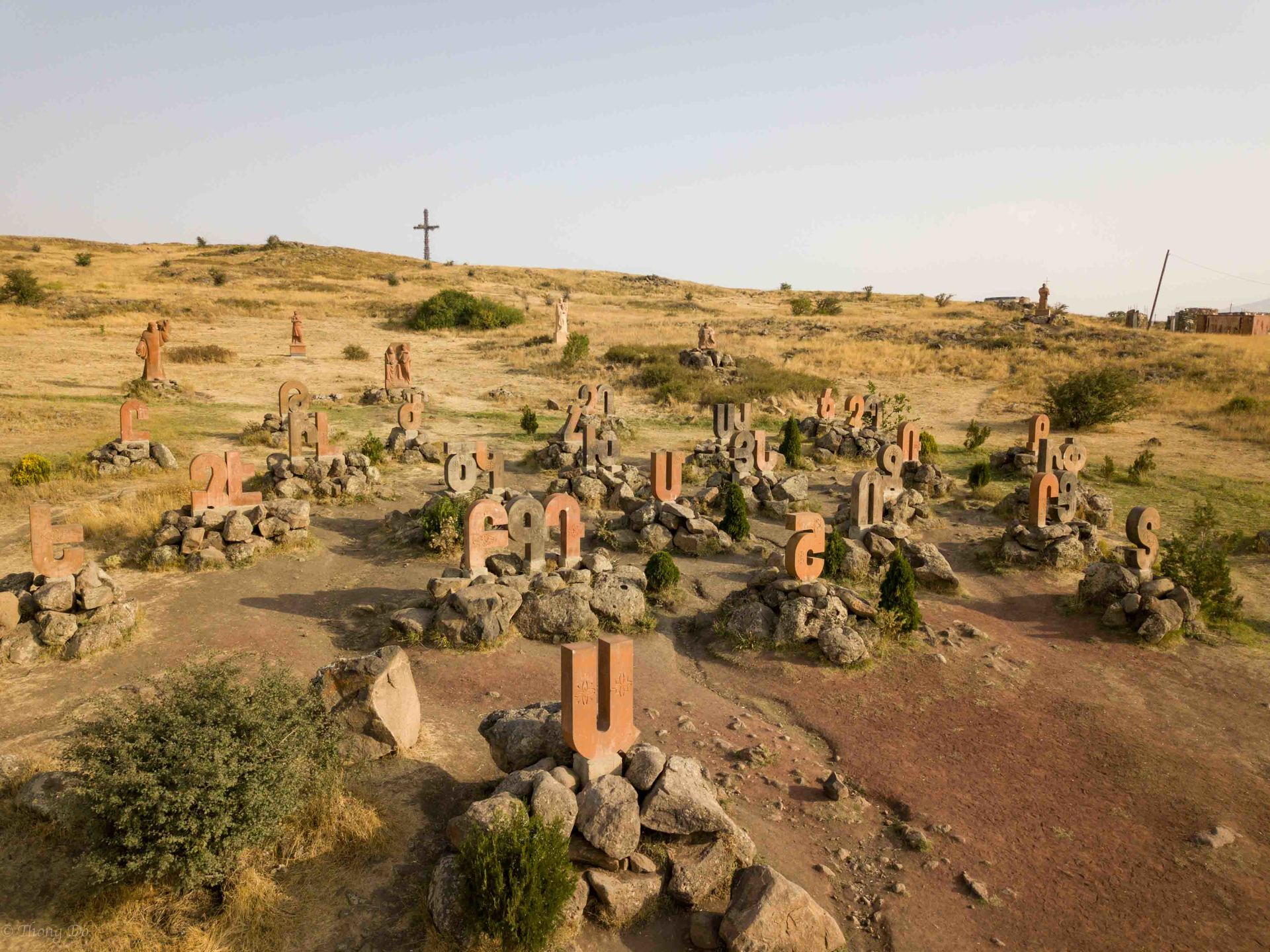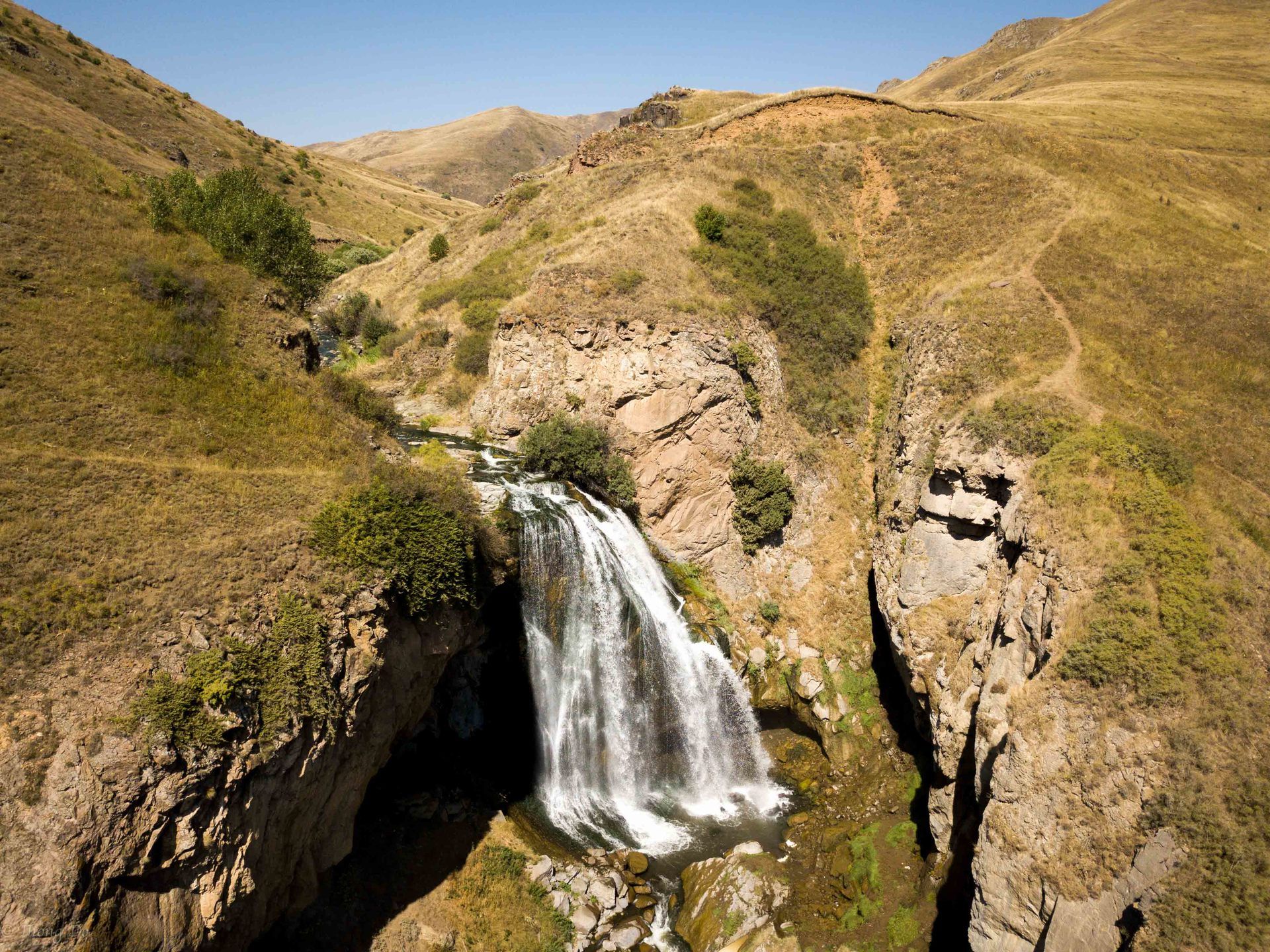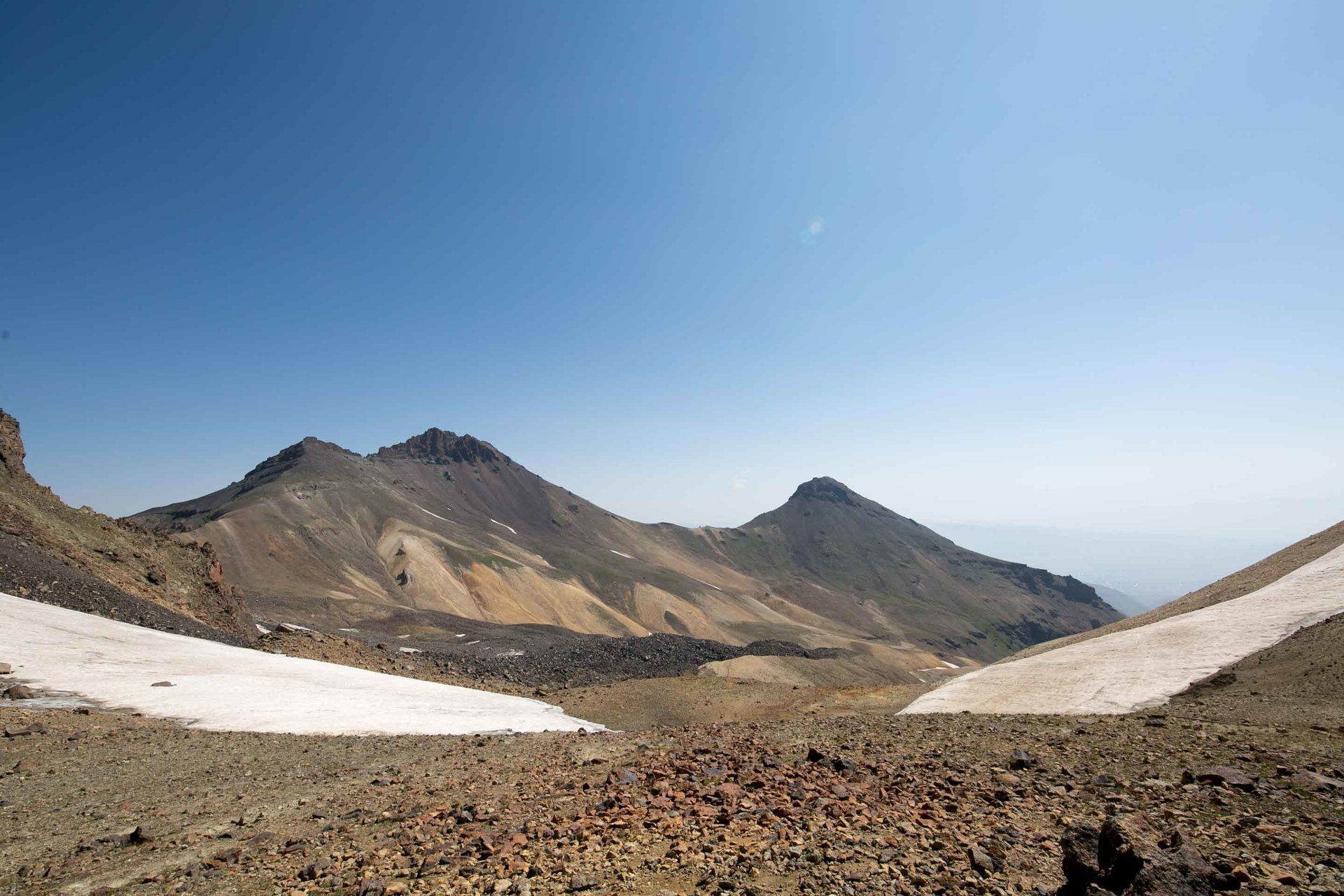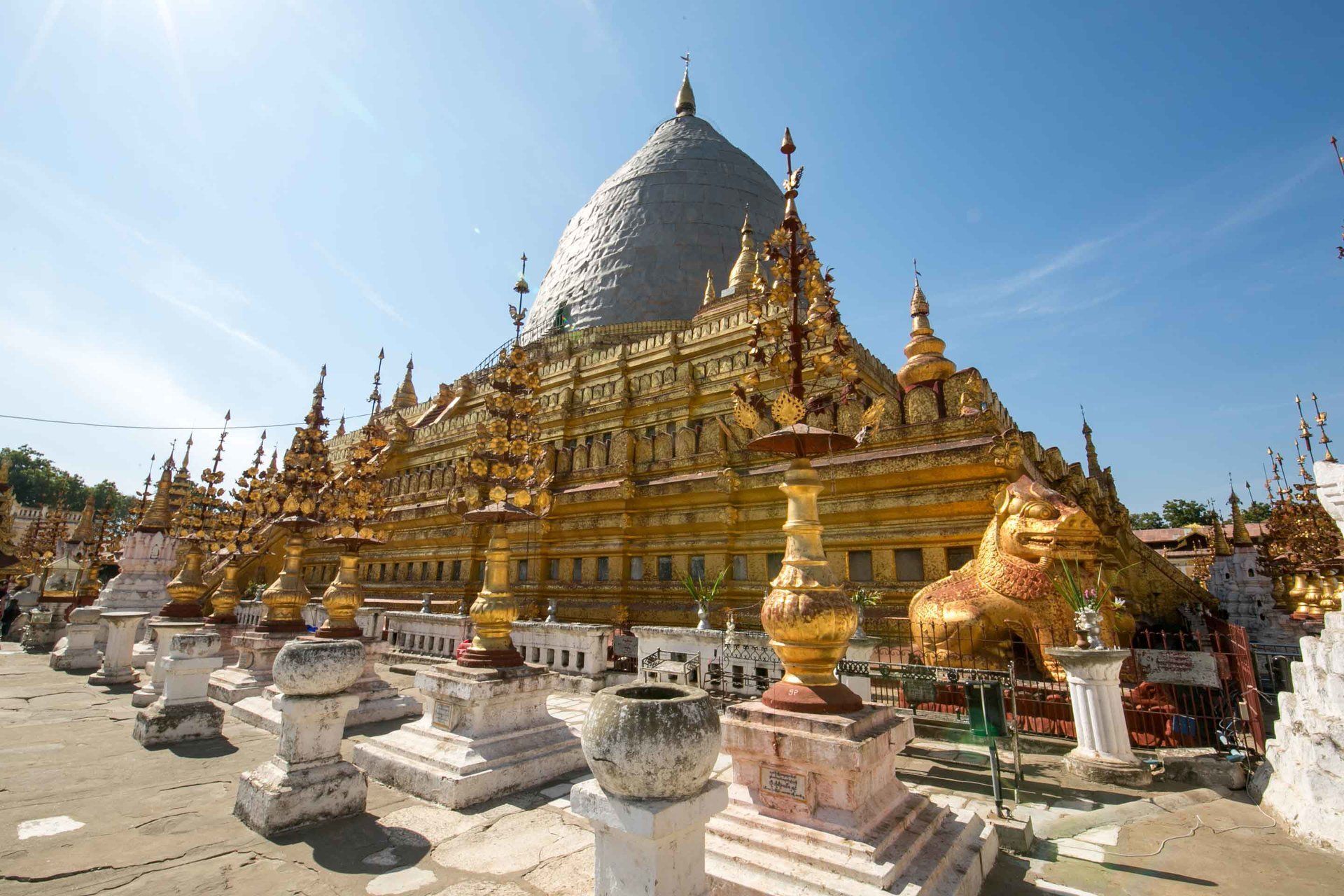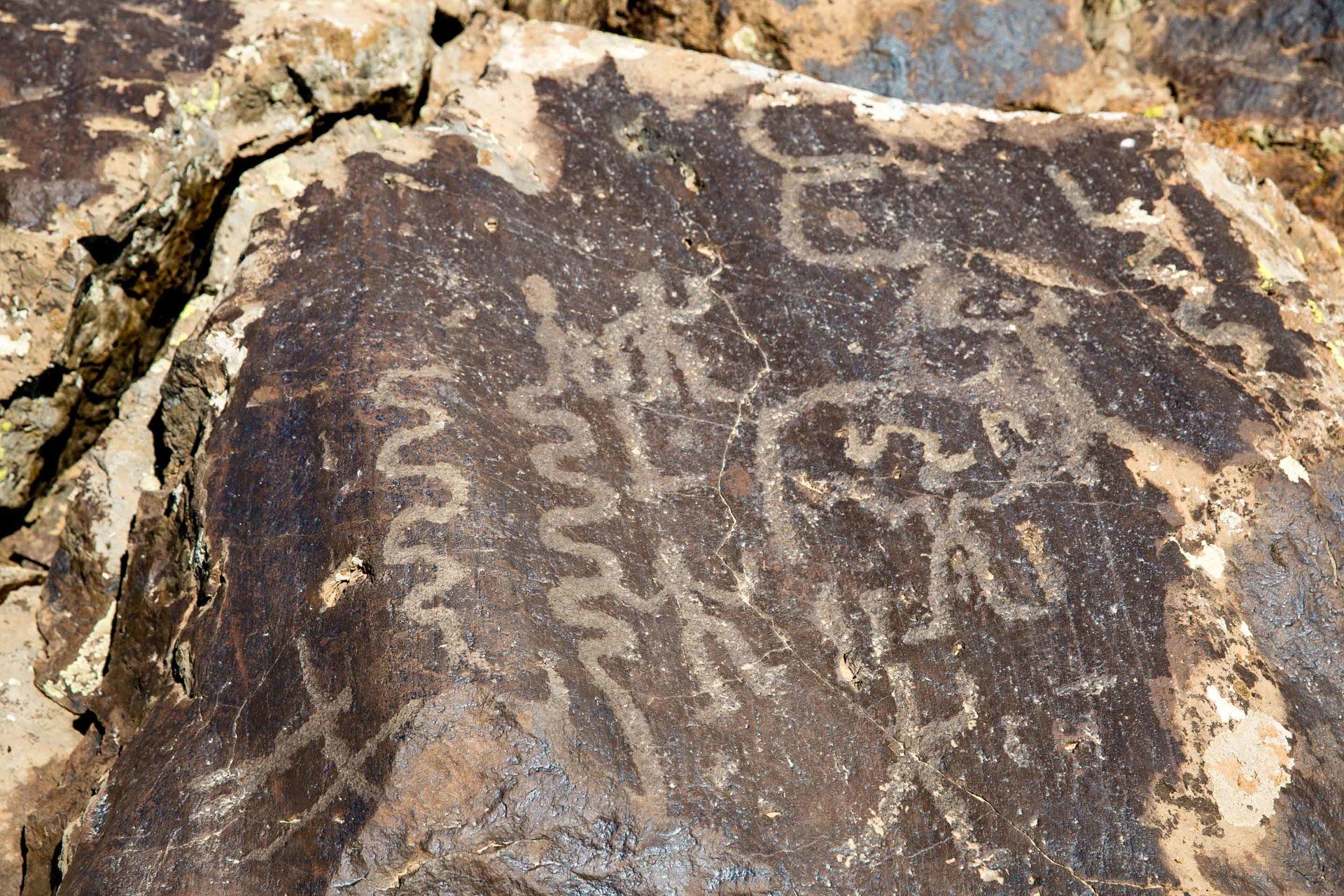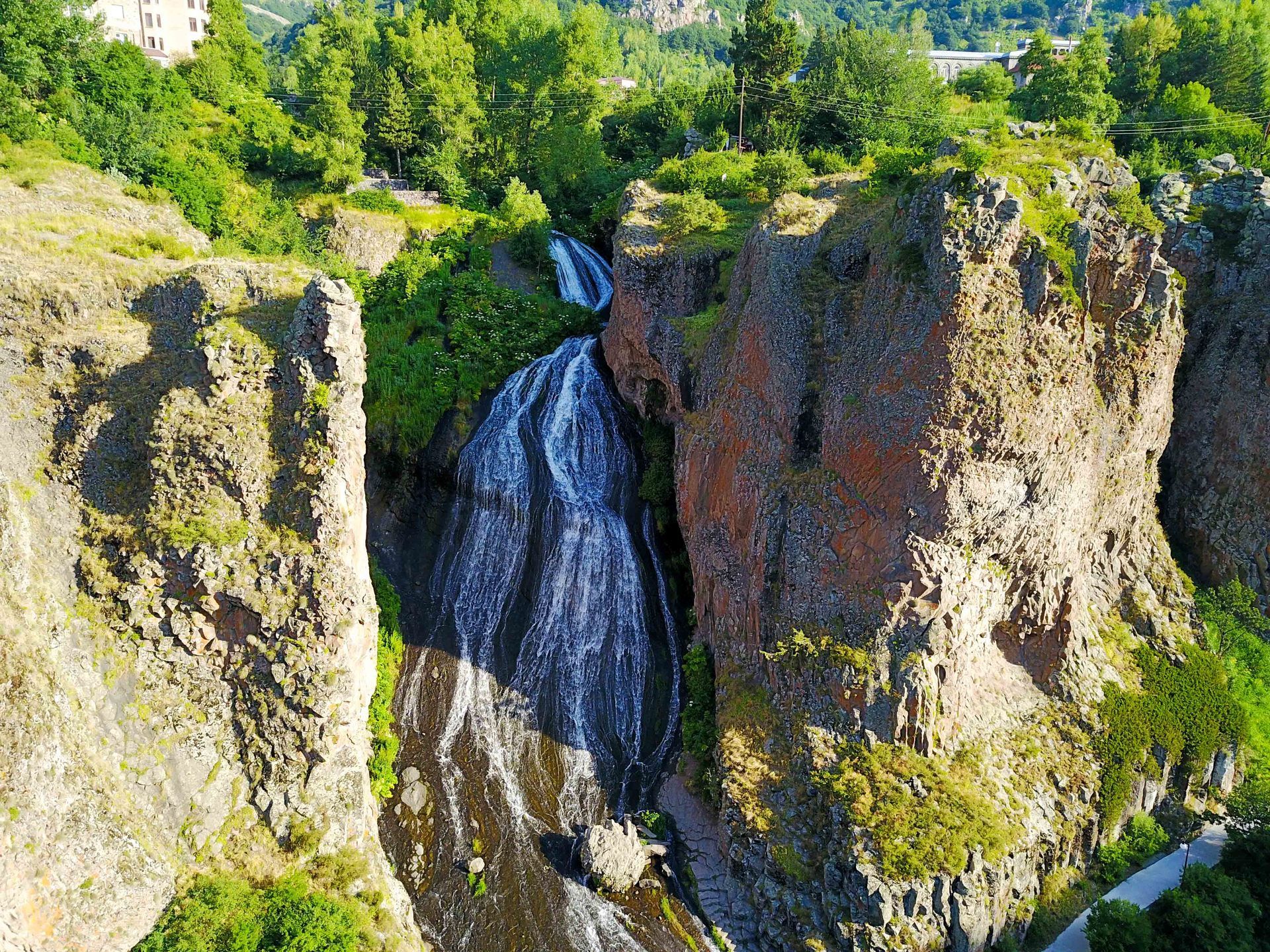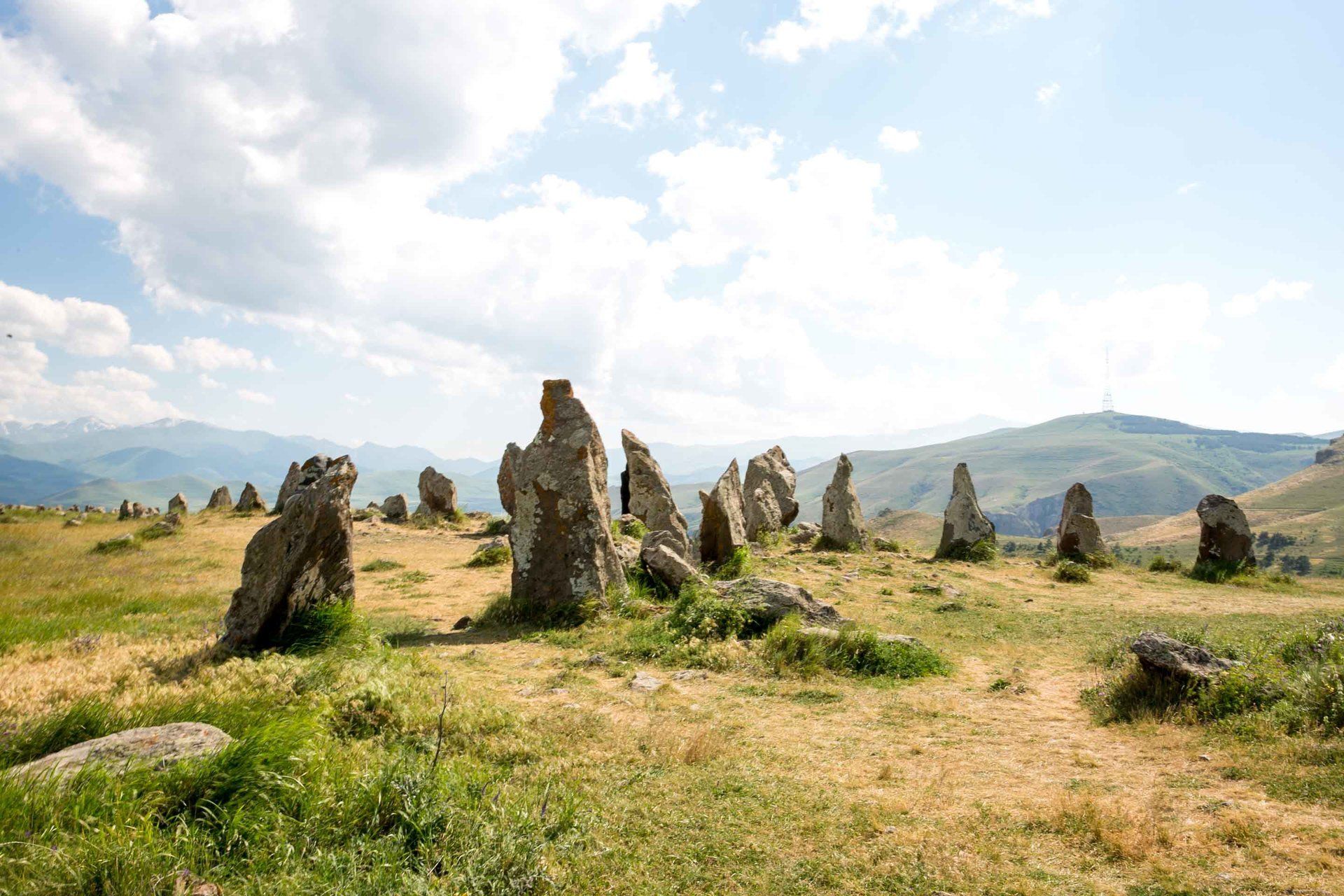Geghard Monastery
- By Thong Do
- •
- 01 Oct, 2016
- •
One of the absolutely Must See Places to visit while in Armenia has to be Geghard Monastery located in the Kotayk province just 45 minutes outside of Yerevan. This is a very ancient monastery that is partially carved out of the mountain and dates back to pre-Christian times. This medieval site was believed to be built in the 4th century when Armenia adopted Christianity as it’s state religion by the first Armenian Catholicos Gregory the Illuminator. The monastery was built around a spring that was found in a cave that was believed to have healing properties and now enclosed by the main gavit
The monastery was originally named Ayrivank. This translates as the “Monastery of the Cave”. The name currently used is Geghardavank. This translates as the “Monastery of the Spear”. The spear is referencing the spear of the Roman soldier that pierced Jesus during his crucifixion and brought to Armenia by the Apostle Thaddeus. The spear was later moved to the Treasury of the Mother Cathedral of Holy Etchmiadzin along with other surviving relics. Geghard Monastery is surrounded by cliffs and the Azat River gorge and is only minutes away from Garni Temple. Historical records show that the monastery included several churches and it also served as a manuscriptorium, music academy, and a pilgrimage site. The monastery has been destroyed and plundered numerous times by Arabs, Turks, and Mongols
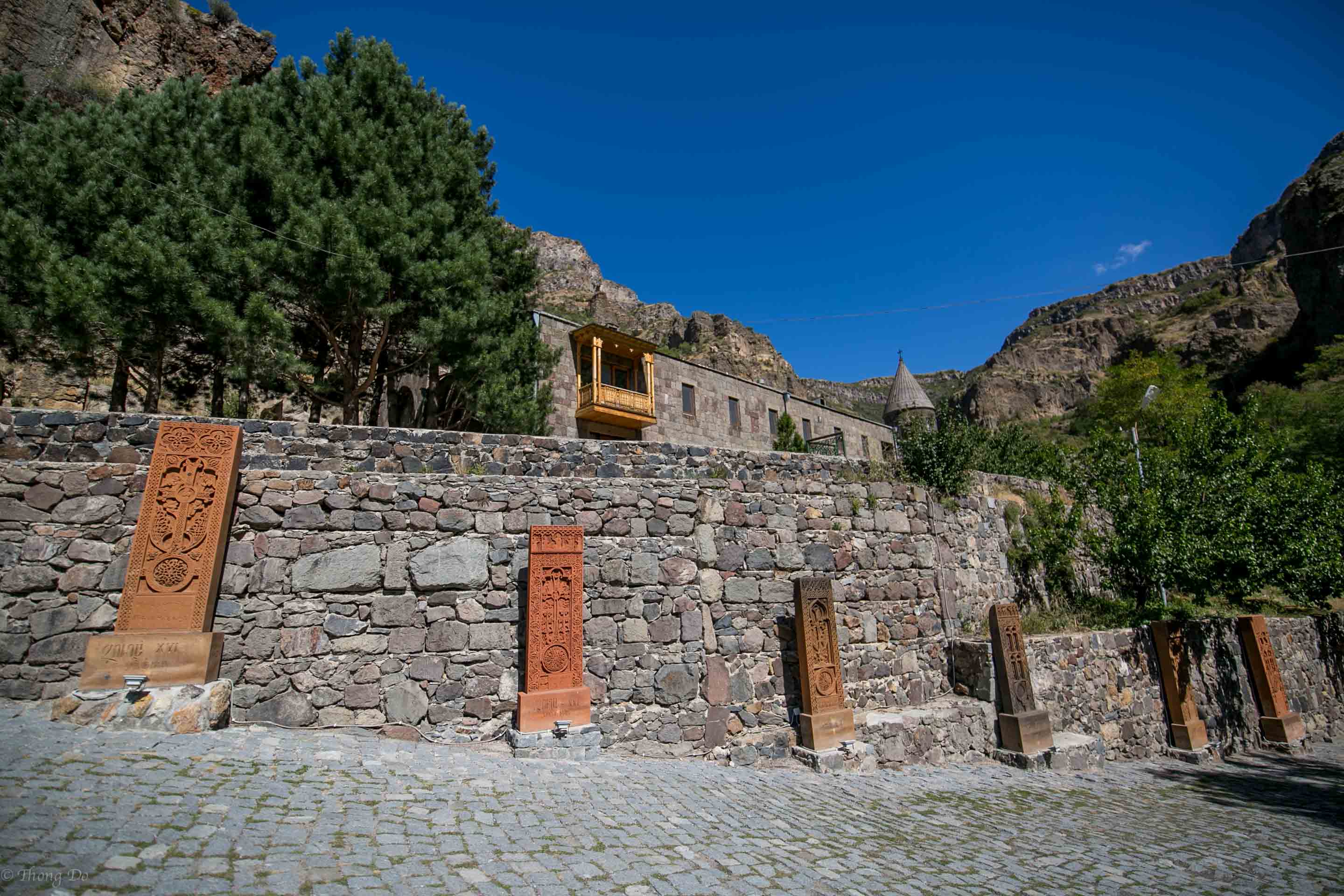
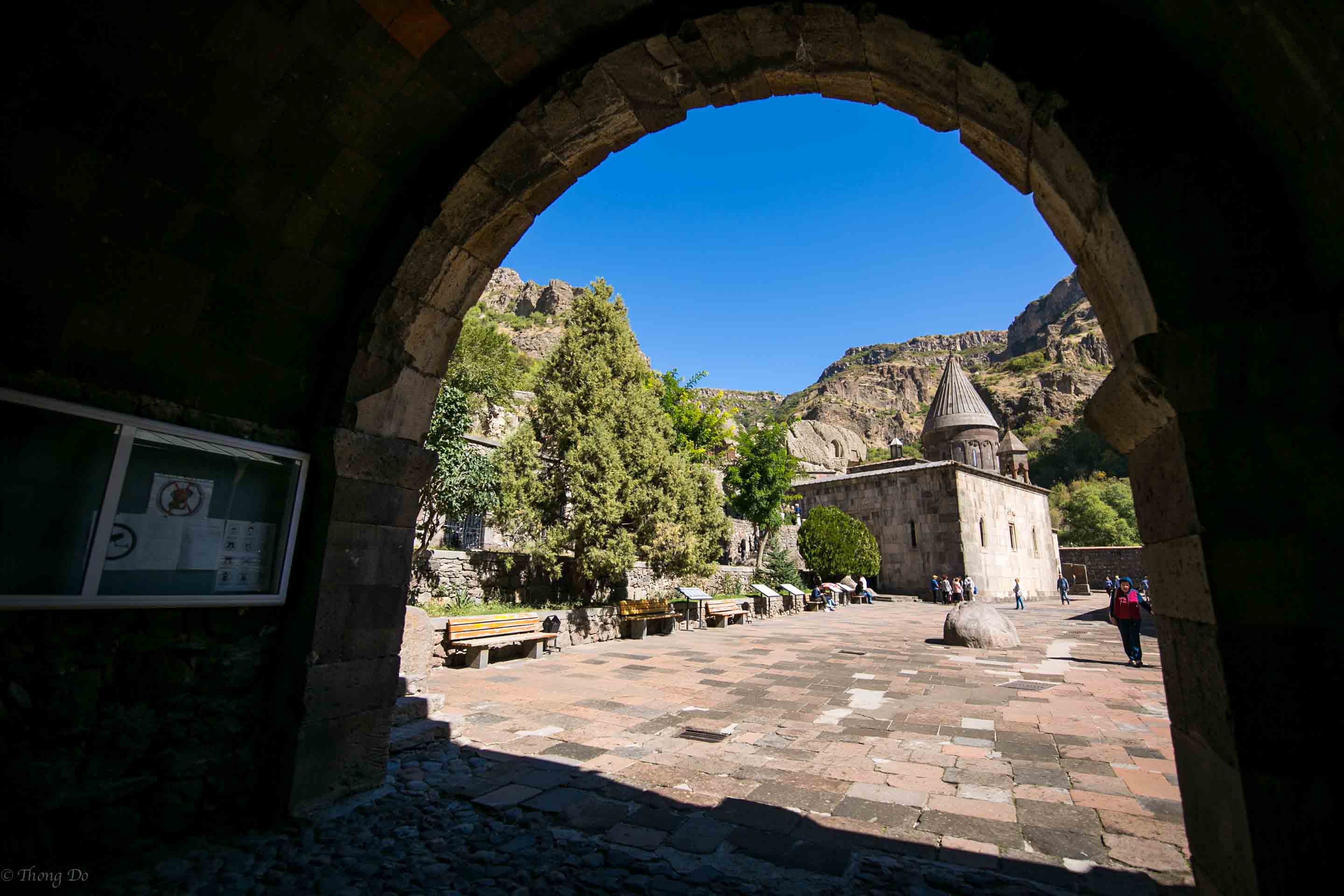
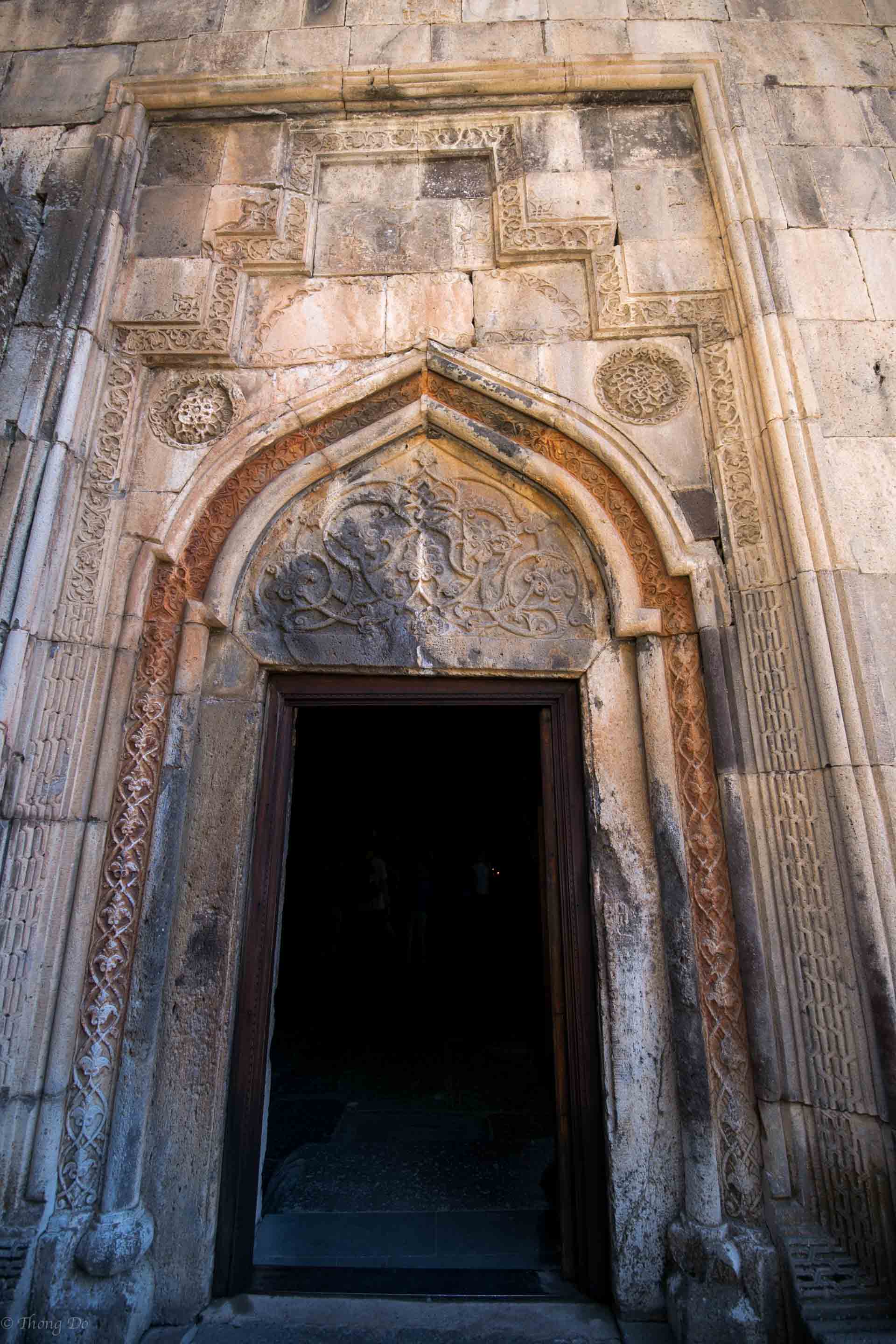
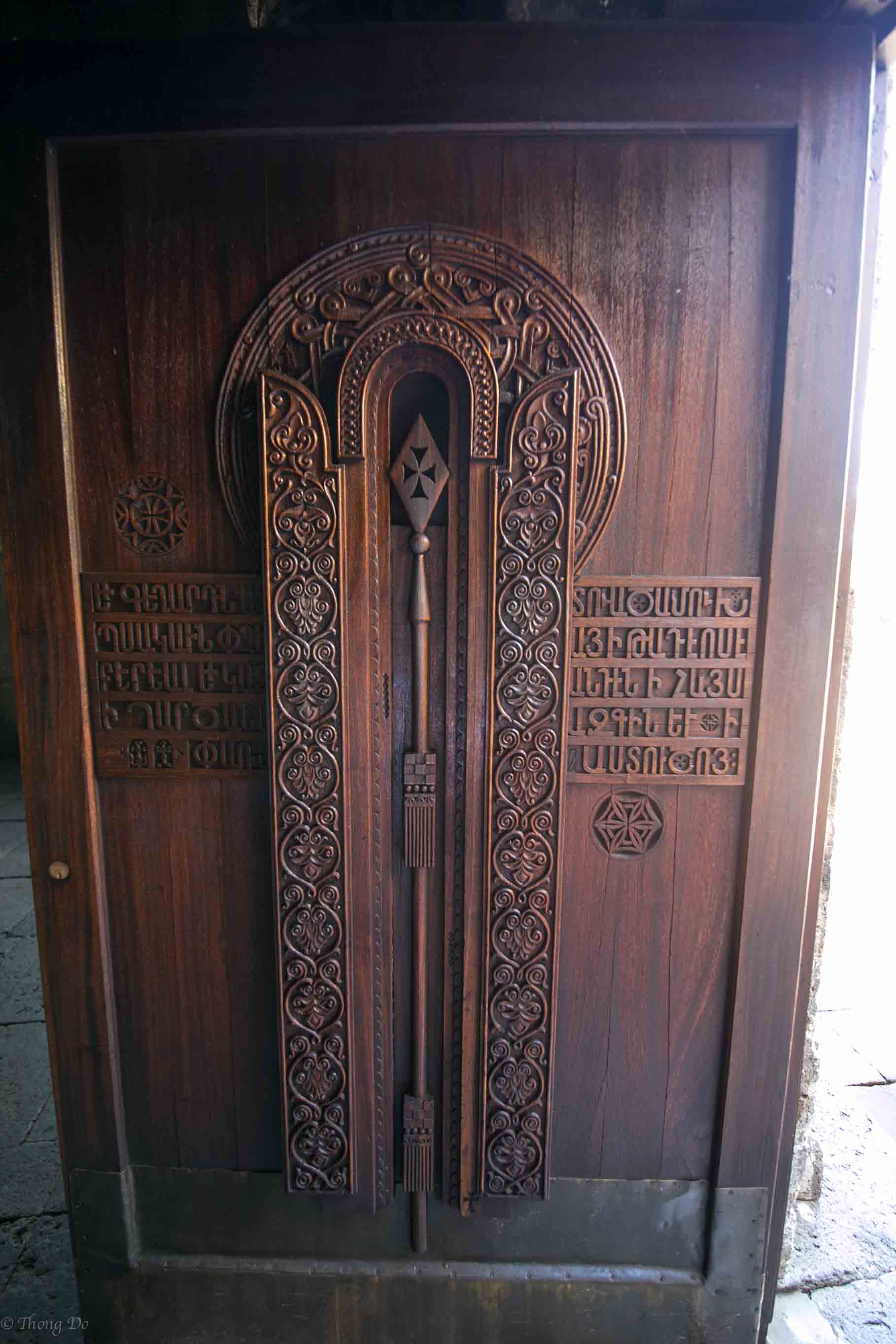
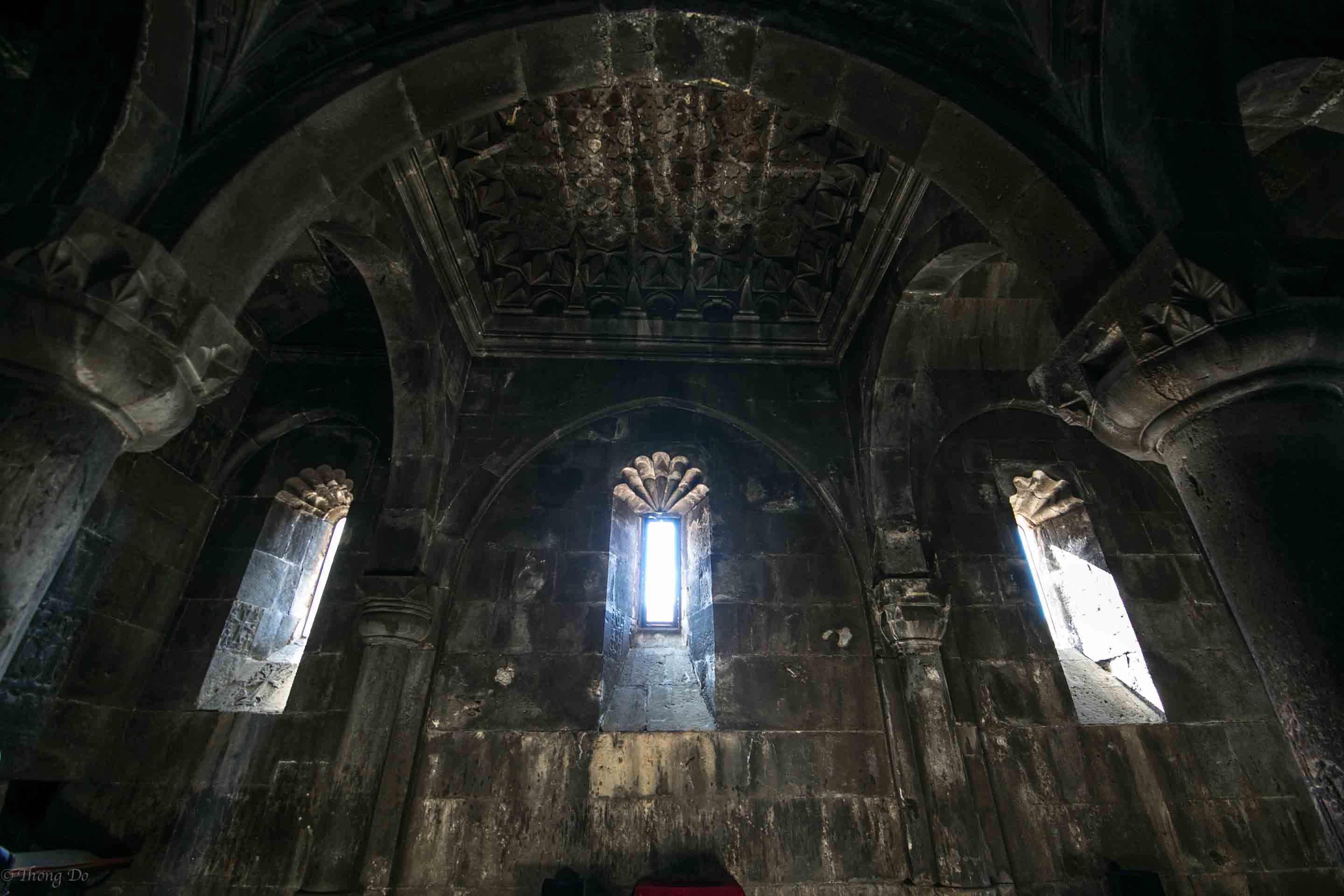
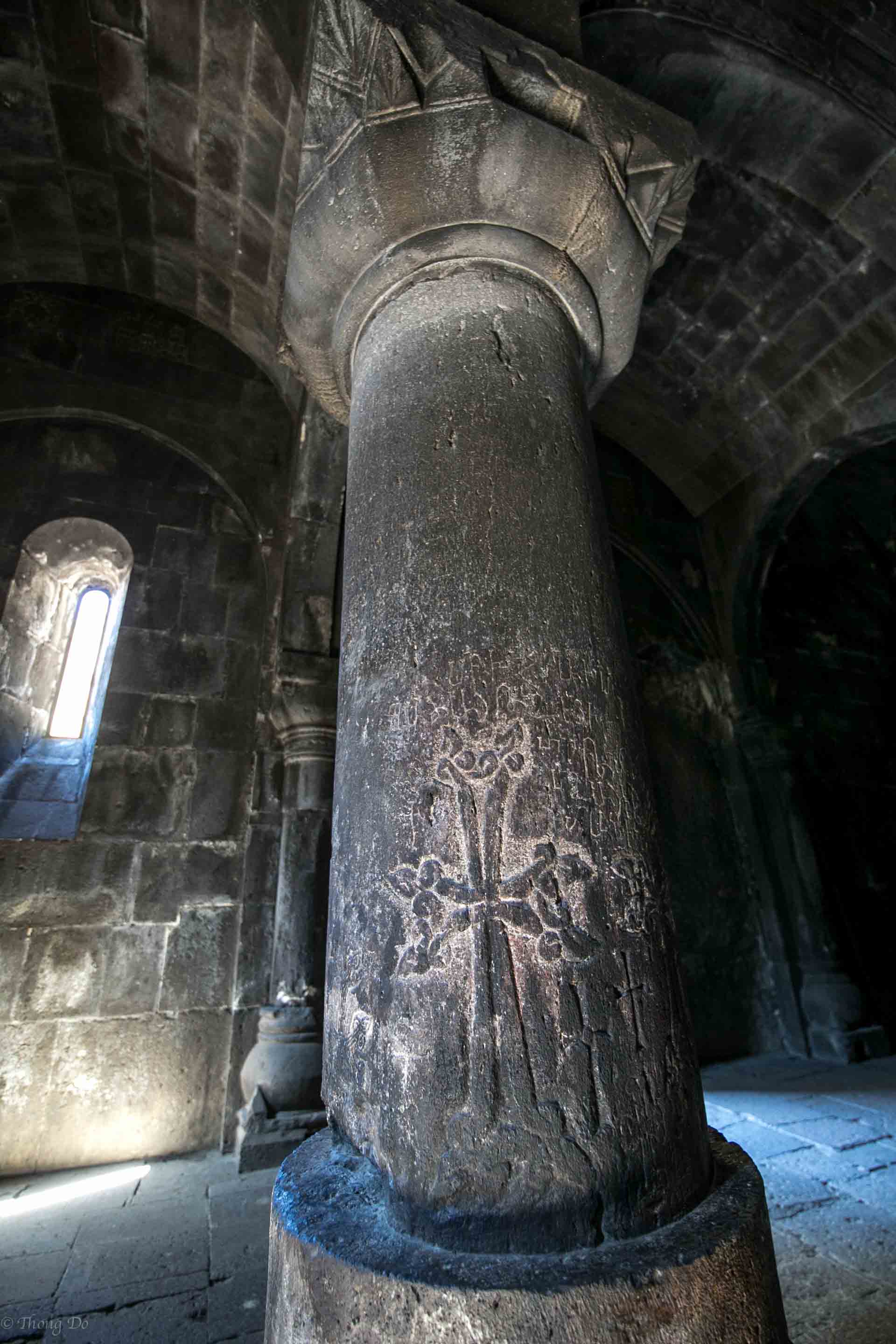
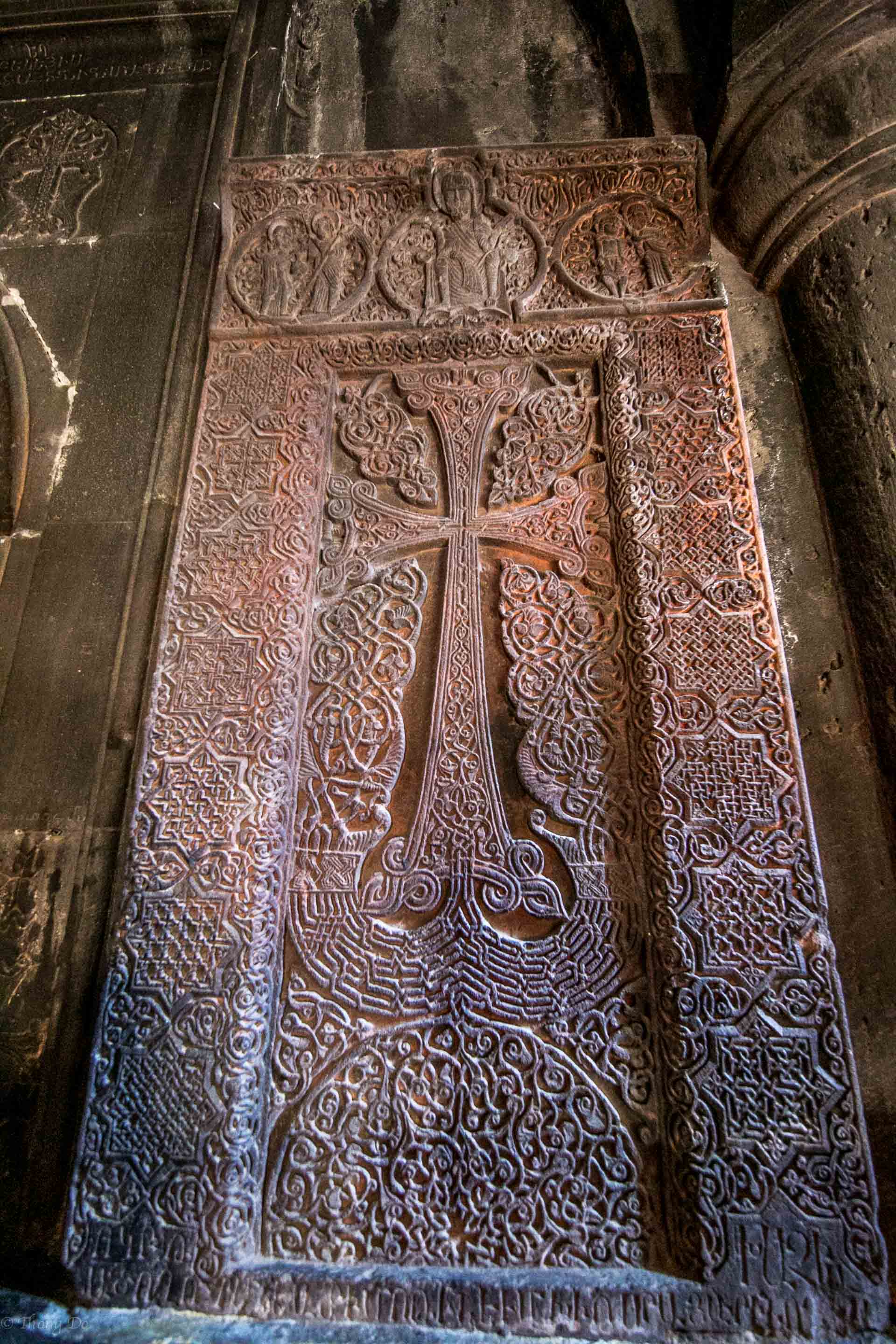
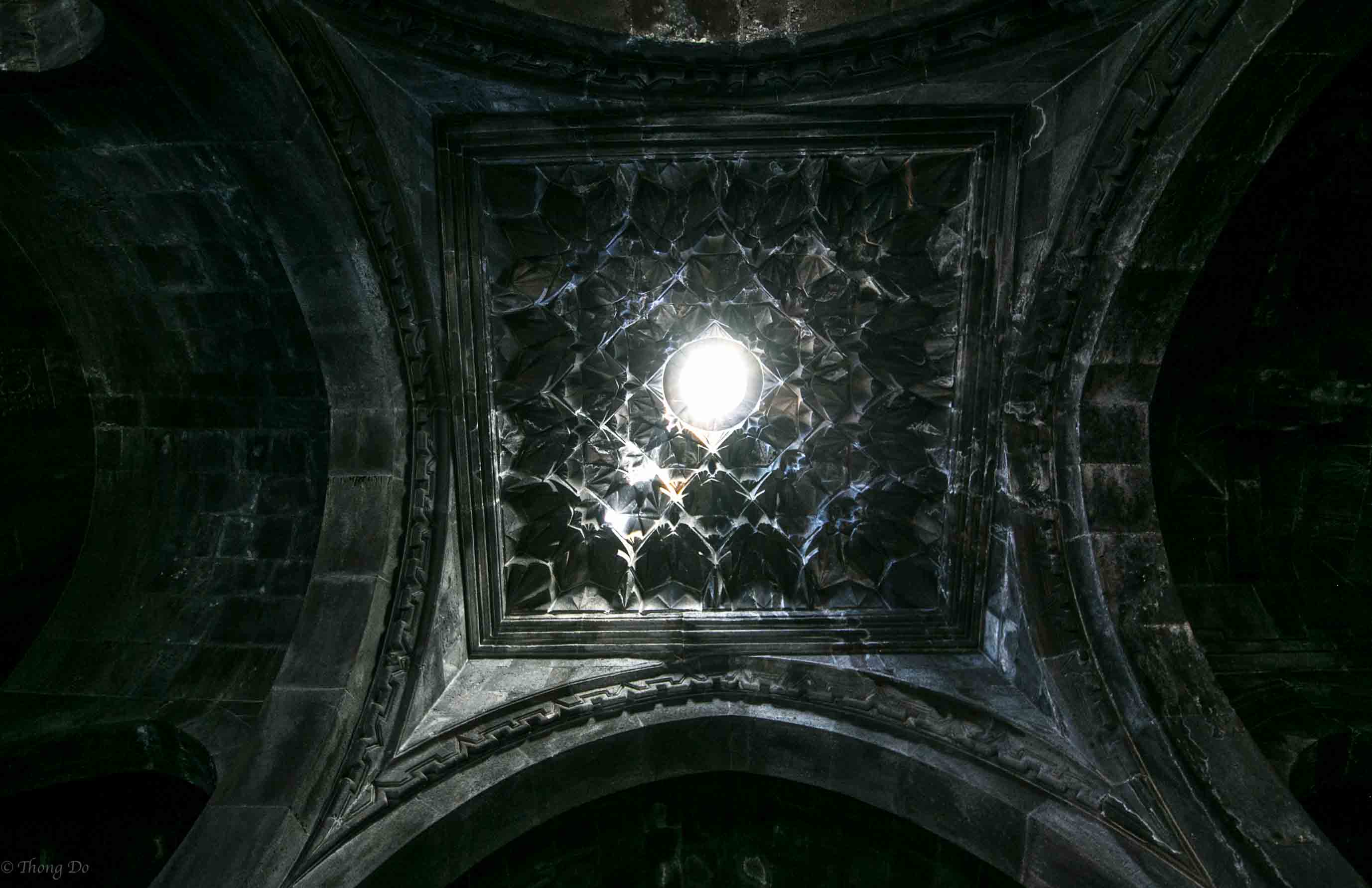
I visited Geghard Monastery right after visiting Garni Temple in the beginning of autumn and was blessed to have great weather with clear skies. The drive from Yerevan will take you past small villages and you’ll likely run into sheepherders and their large flocks like I did on the road. Upon entering the monastery complex you are greeted by various vendors selling various types of food and souvenirs on a stone path. As you walk up the stone path towards the western entrance you’ll be encountered by some khachkar (cross stone) replicas on your right hand side. As you turn the corner and look above you’ll be able to see caves in the cliffs and others signs of domestication. Right before you enter the monastery you will see some grooves carved into the cliff. Throw a pebble and hope it lands and your wish will come true!
As you walk past the entrance you are immediately hit by the immense size of the complex. The first building I entered was through the gavit to the Katoghike Chapel. Constructed in 1215 the architectural forms of the building are well proportioned and harmonious. Pay close attention to the details and designs on the walls. The light coming through the windows and through the dome is a site to see since it’s quite dark in there.
Turn north towards the cliff and you’ll see the western entrance will take you to Avazan Church. You’ll be able to come to the spring and get a sip of cold water from here as many have done before. On the wall you’ll be to see many designs carved into the stone. The Avazan Church was constructed by hand in the mid 13th century (1230-1250 A.D.) An inscription at the base of the dome recorded the church was built by the architect Galdzag who was contracted by the royal Proshian family.
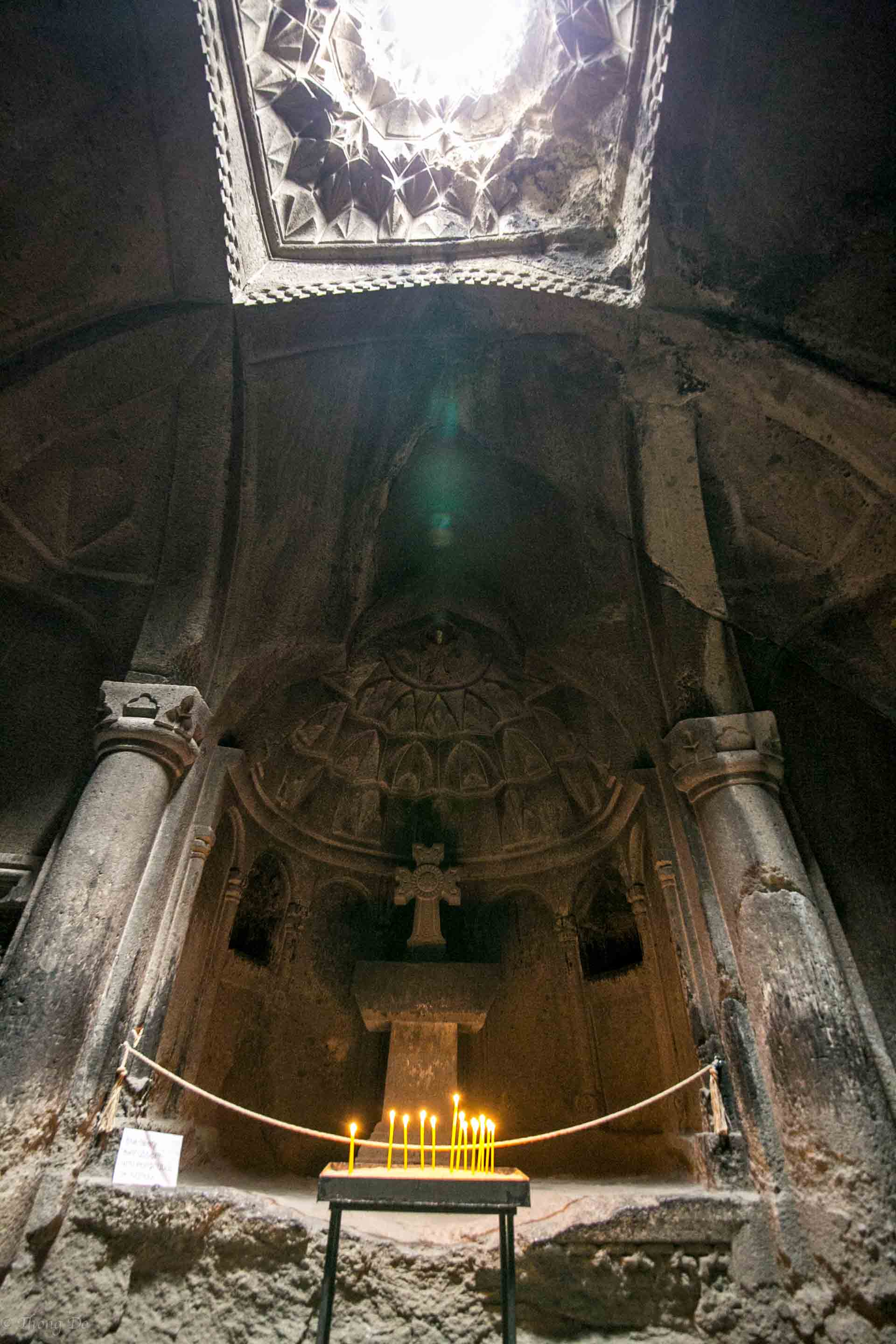
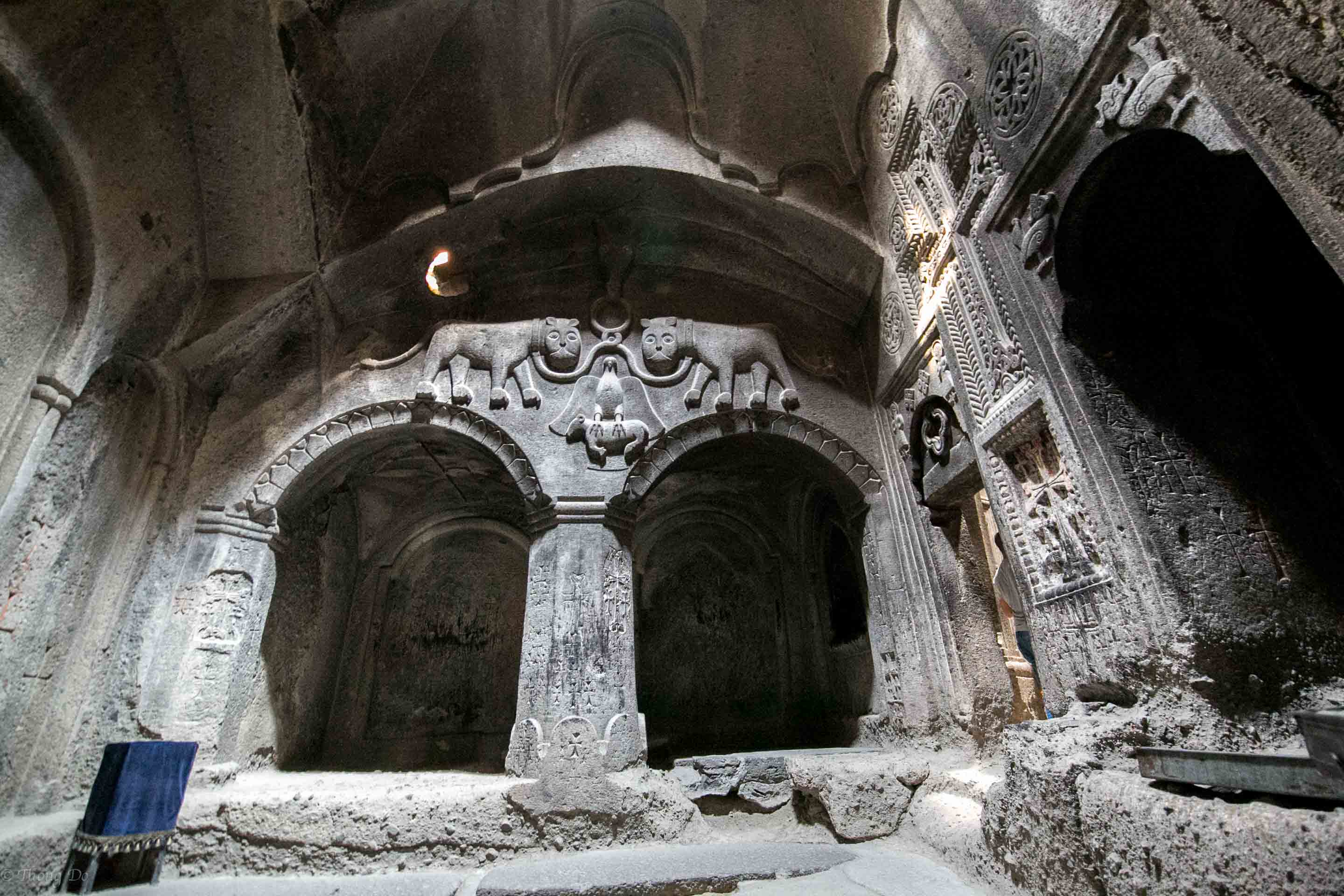
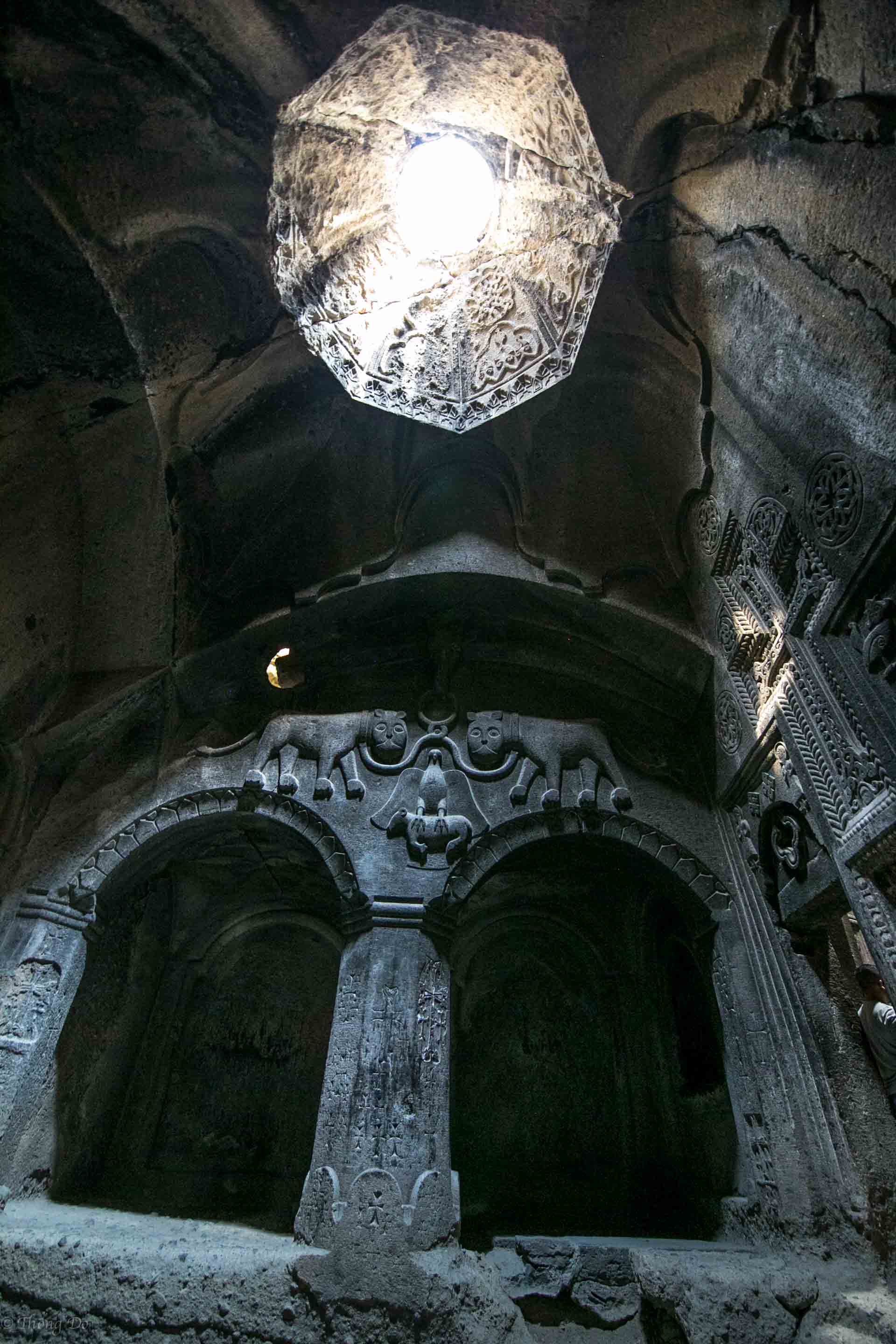
The adjoining room from the main room will take you to the Proshian Sepulcher where you will encounter elaborate high relief carvings on its walls and niches for holding the remains of noble families. Originally commissioned in 1215 by the Zakarians, the current room was carved for Prosh Khaghbakian, who purchased the monastery from the Zakarians and had the chamber englarged in 1283. A huge Proshian crest is carved above the northern wall, underneath which lay the remains of the Proshian family. The actual crest shows two lions tethered by an iron ring held by a bull’s head, over an eagle clutching a lamb. Pay attention to a small hole the size of a watermelon in the upper left of this chamber because this is part of another chamber on the upper level.
Next to this is room is the St. Astvatsatsin Church. The most impressive feat about this structure was that it was built from the top and worked its way down. The room is symmetric and the attention to detail is amazing. The light coming through the dome gives a special ambience to the mood. This church was carved by hand and took 40 years to complete. In terms of ingenuity and grit, this complex reminds me of the Petra in Jordan.

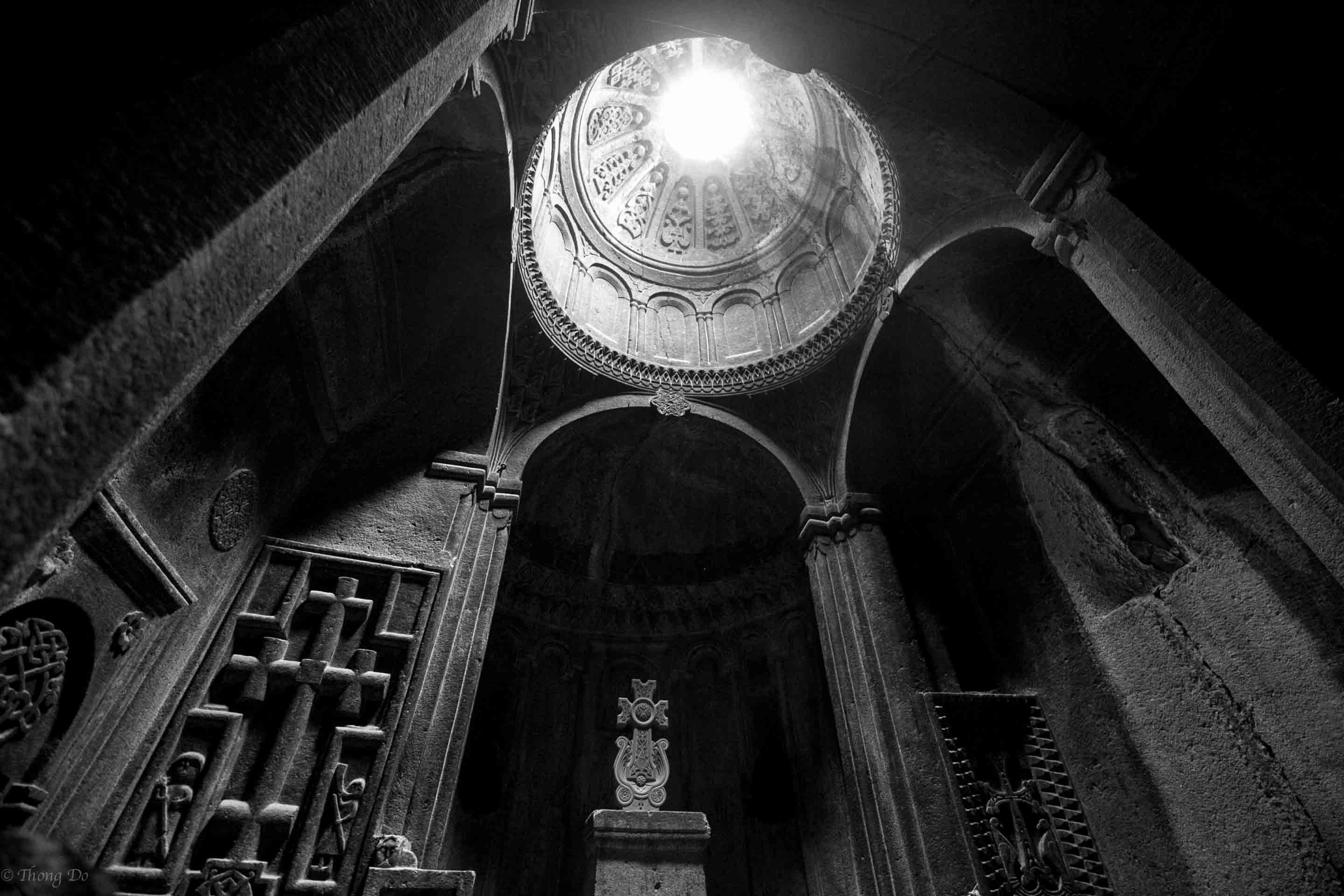
The last place to see is the Katoghike Church. Once you walk inside you’ll notice numerous inscriptions carved into the stone in old Armenian. Most of these inscriptions on the wall are the names who donated towards the construction of the church. The ceiling is incredibly high and it’s a visual delight to witness.
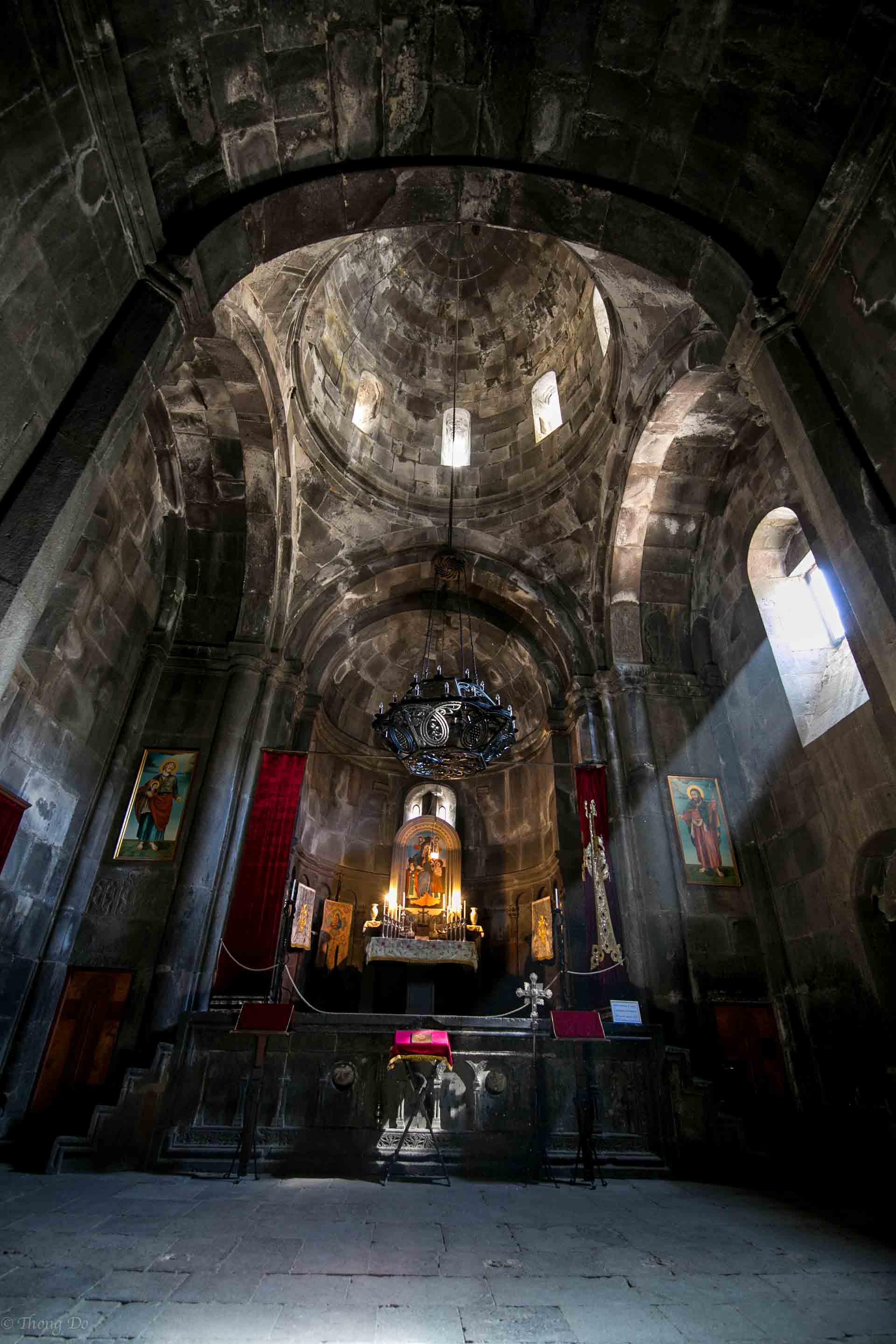

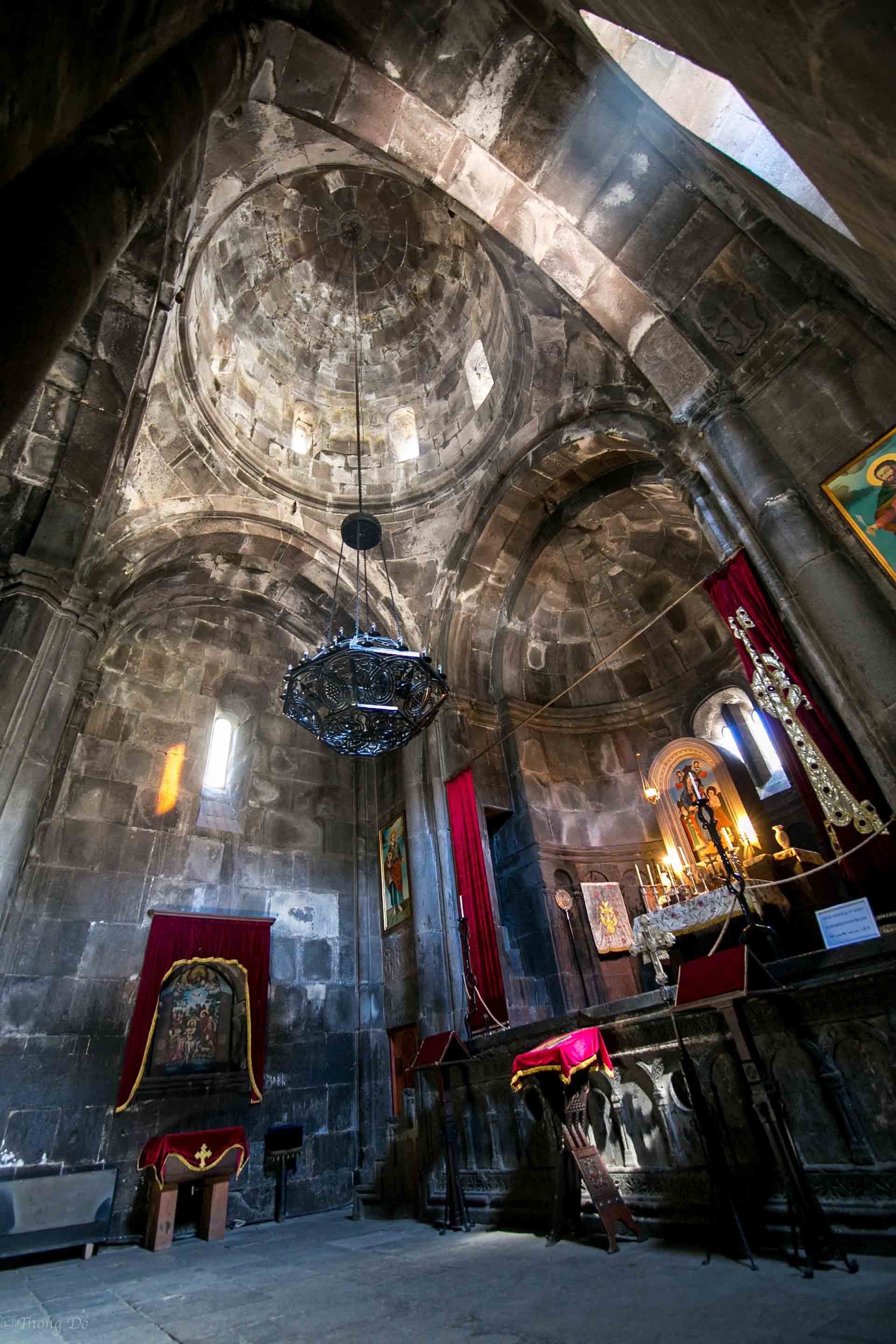
As you exit the complex take the carved out staircase above to the second level and you’ll be able to see various kachkars scattered throughout the cliff. The first thing I noticed was hearing faint singing in the background. As it turns out, the chamber and hallway have great acoustics and a quartet was singing and it sounded incredible. It’s perfect for sharakans (Armenian religious songs) As you walk through the hallway towards the tomb chamber of princes Merik and Grigor you see the numerous khachkars engraved in the stone. As you enter the chamber you are encountered by 4 large columns that the roof is resting upon. The room is divided into 9 equal parts with the dome in the center.
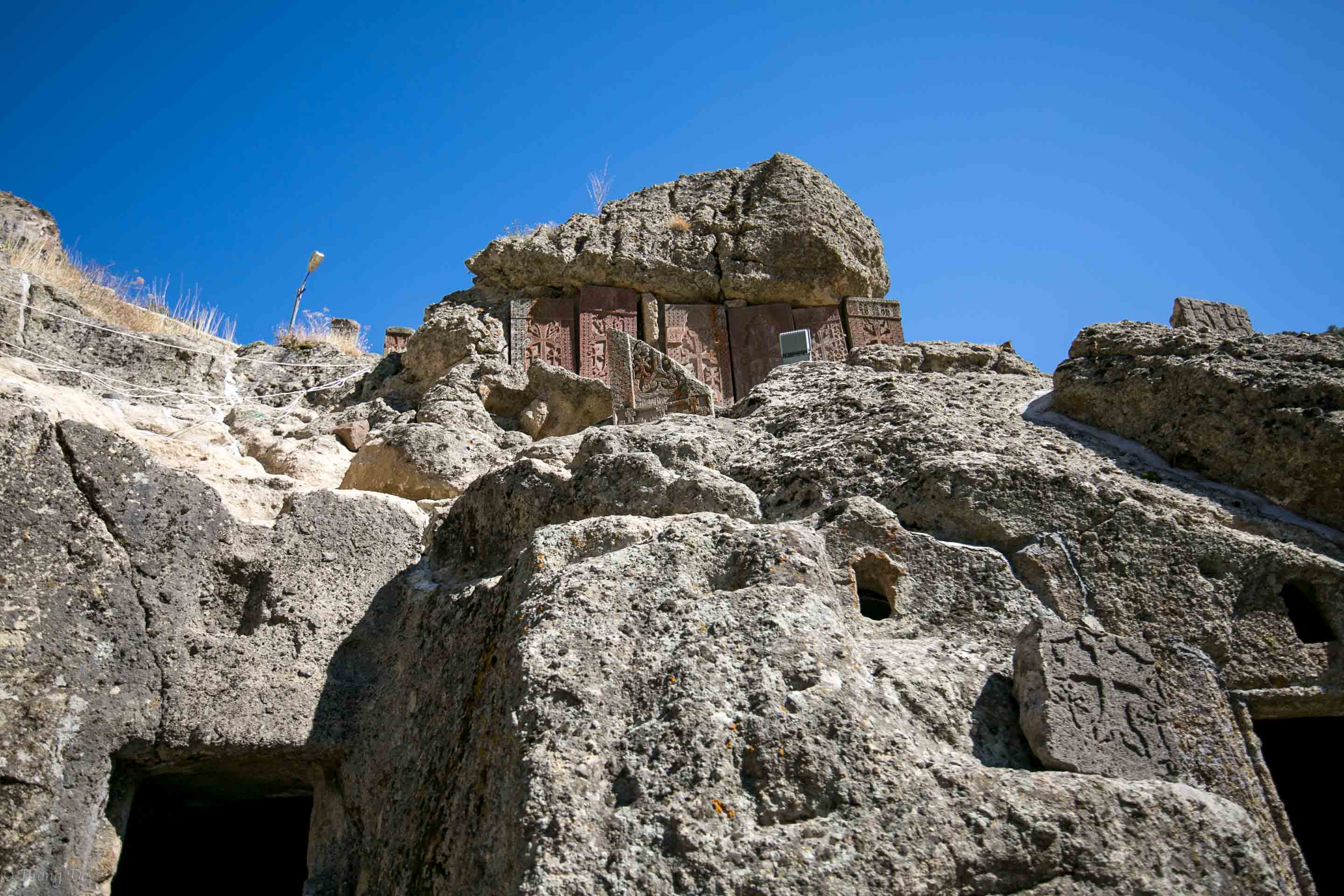
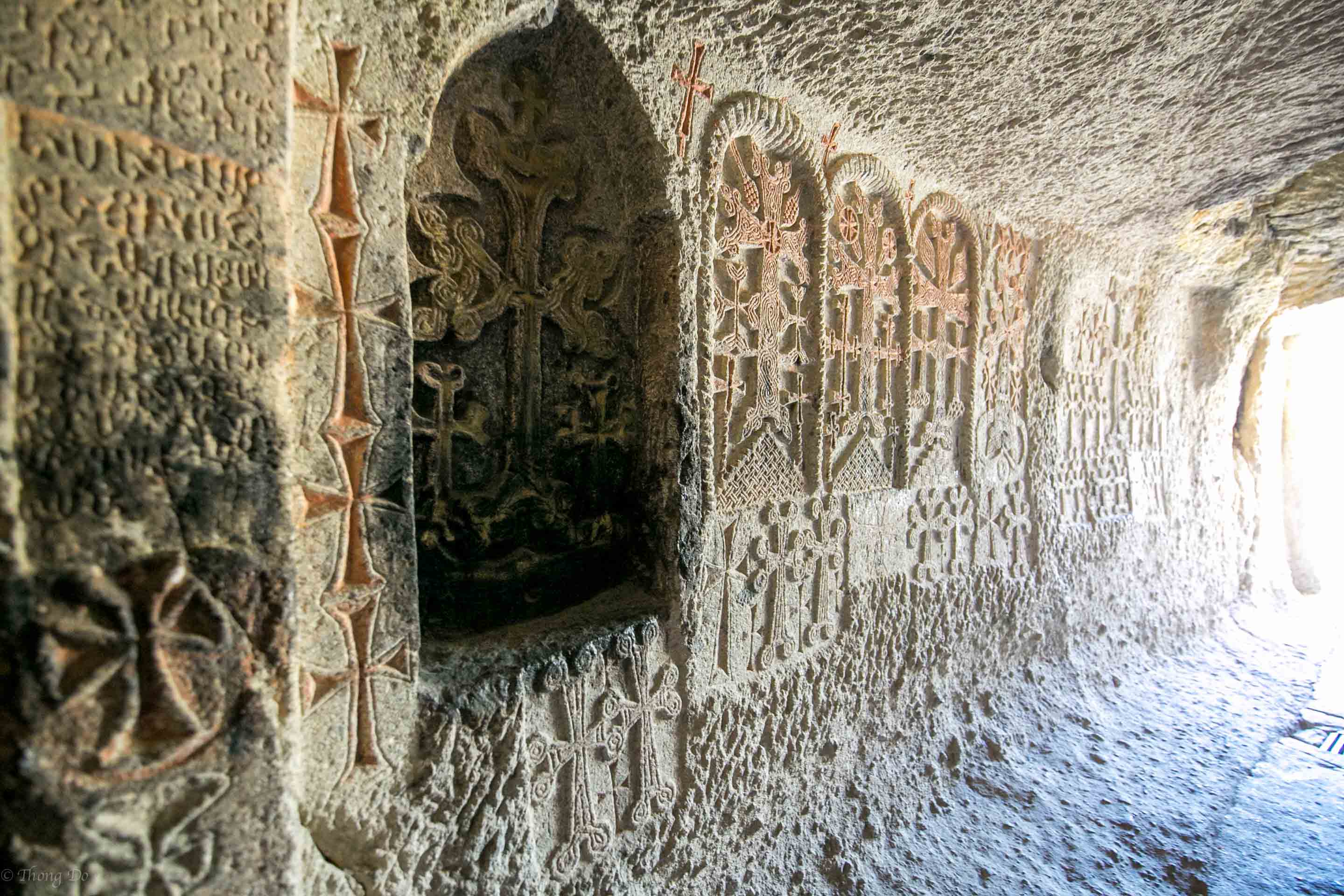
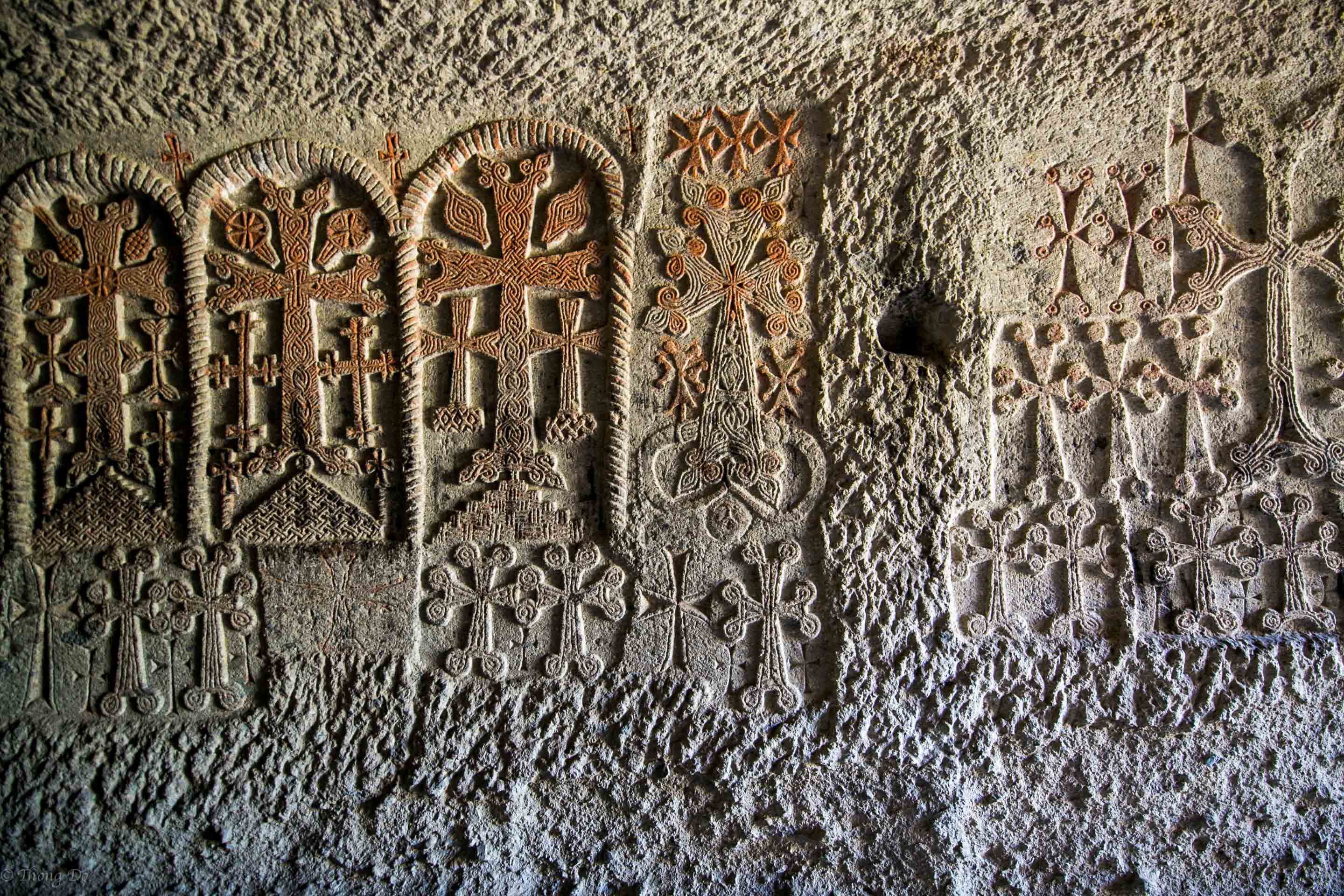
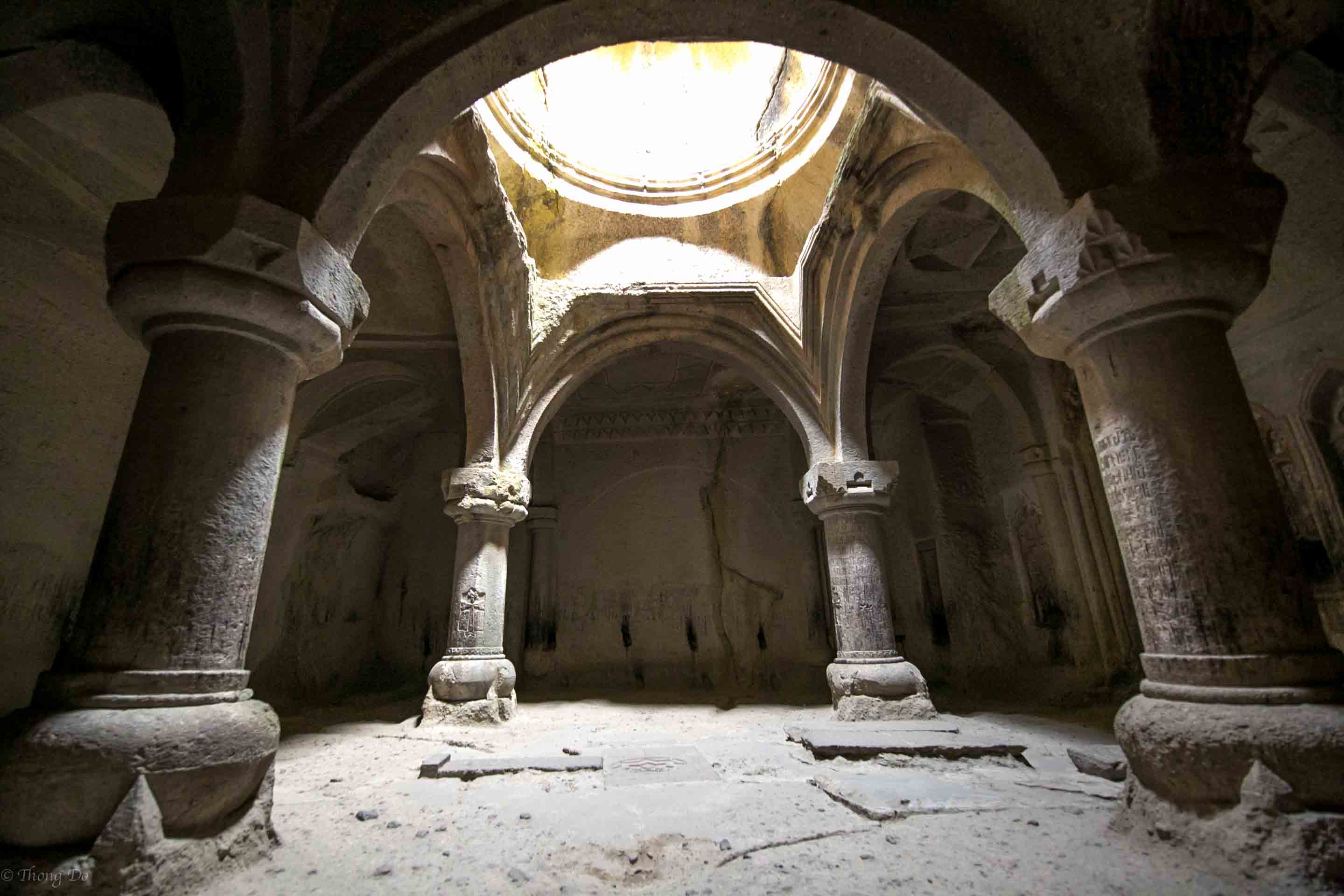
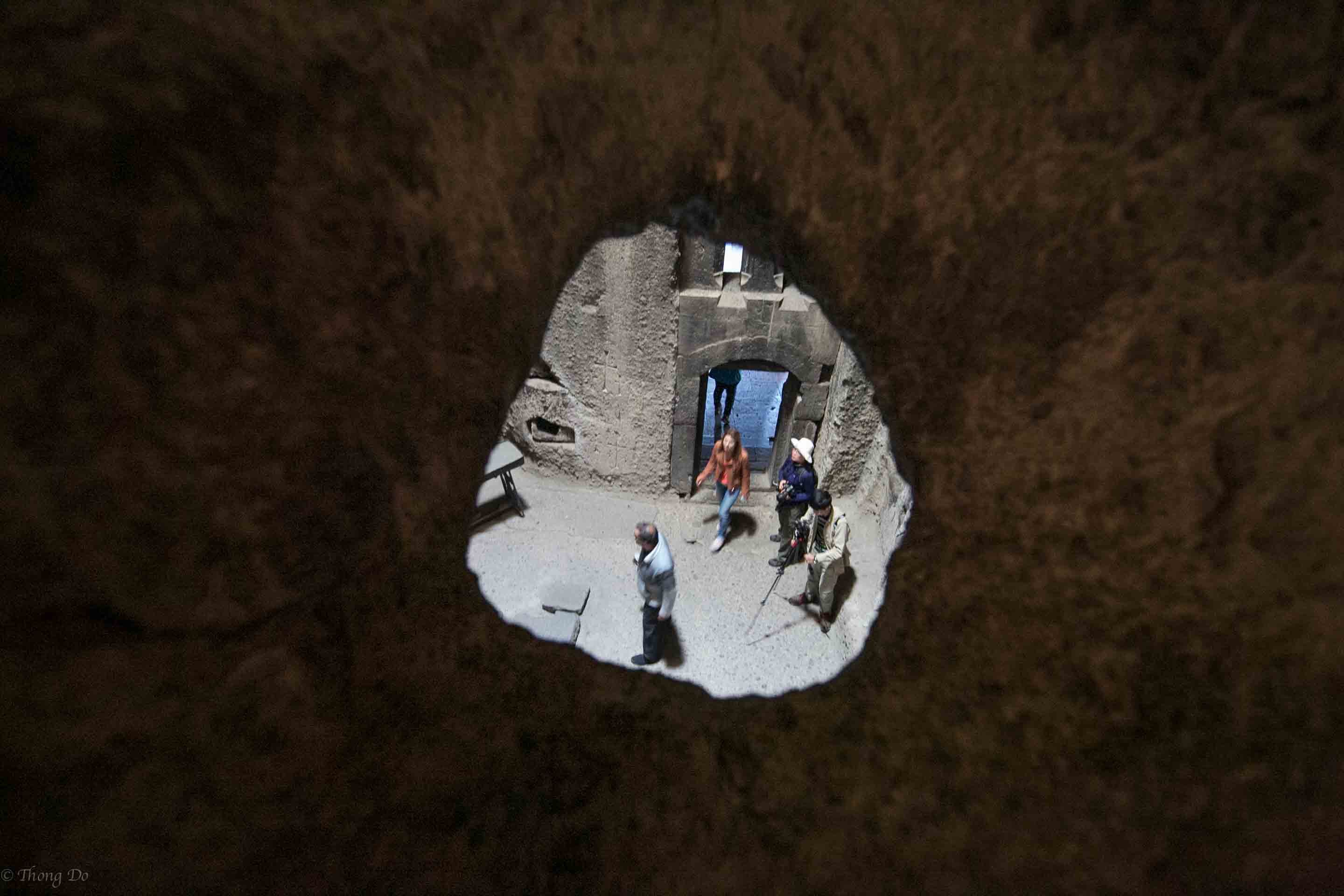
The last part of Geghard Monastery is towards the eastern section. It is here you come across another carved staircase with enormous khachkars engraved on the side of the cliff. The view from the second level gives a great view of the entire ground and its hard to not be inspired by the beauty and ingenuity involved in the creation of this magnificent complex.
There is an eastern entrance and this takes you to a nearby river. Many animal sacrifices are done in this area in conjunction with the pagan roots. A small little bridge overlooking the nearby rocky mountains offers a nice panoramic view of the complex too.
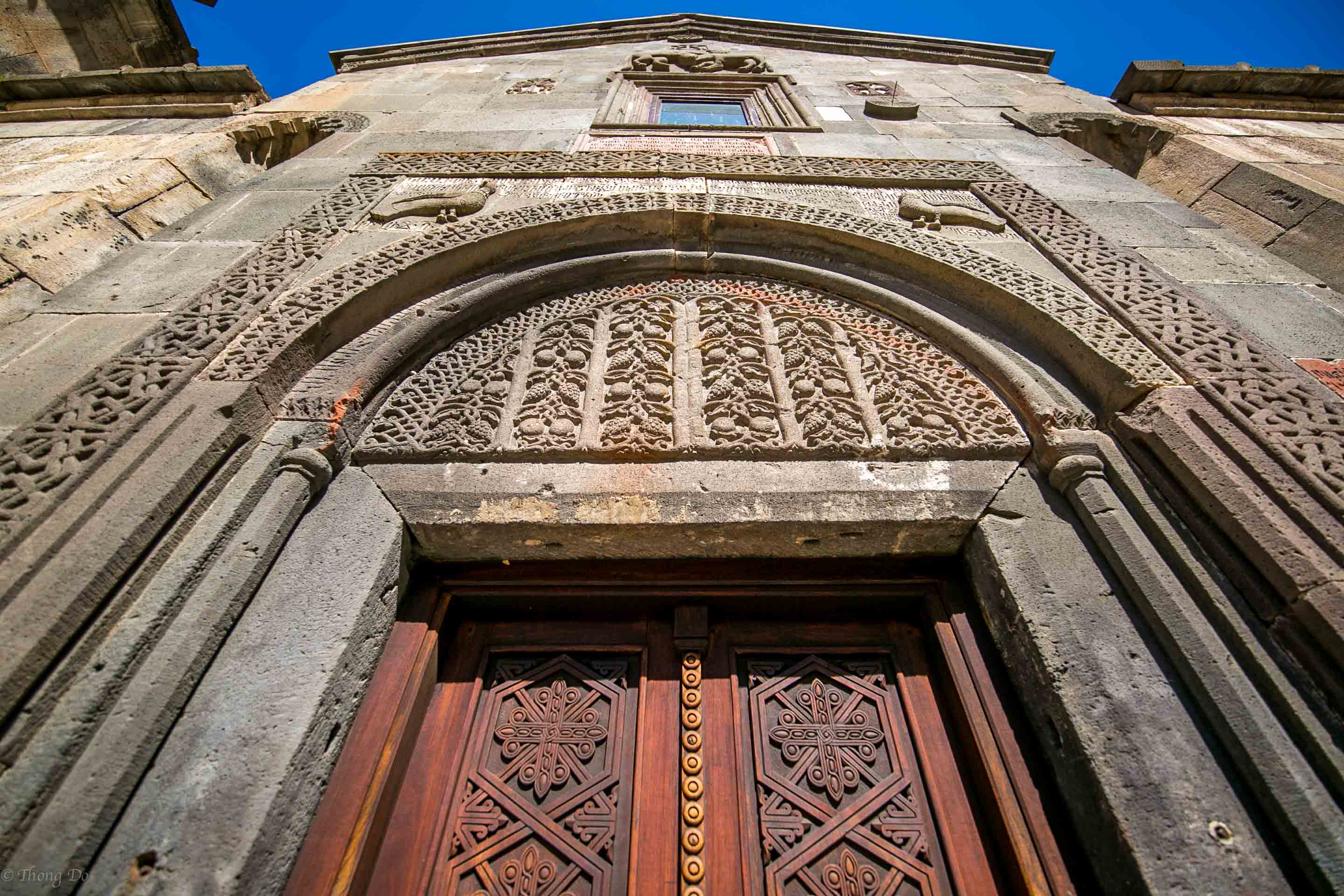
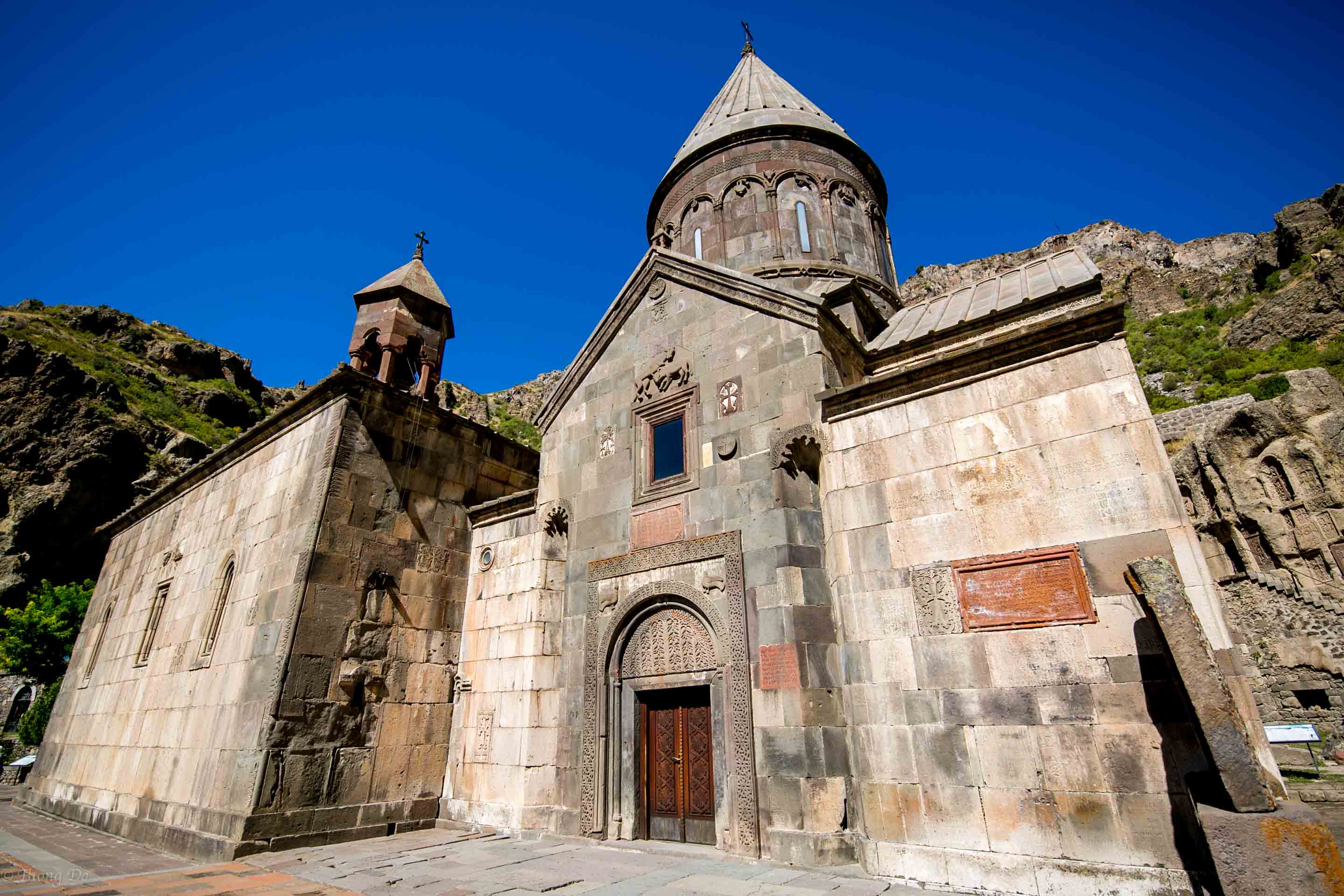
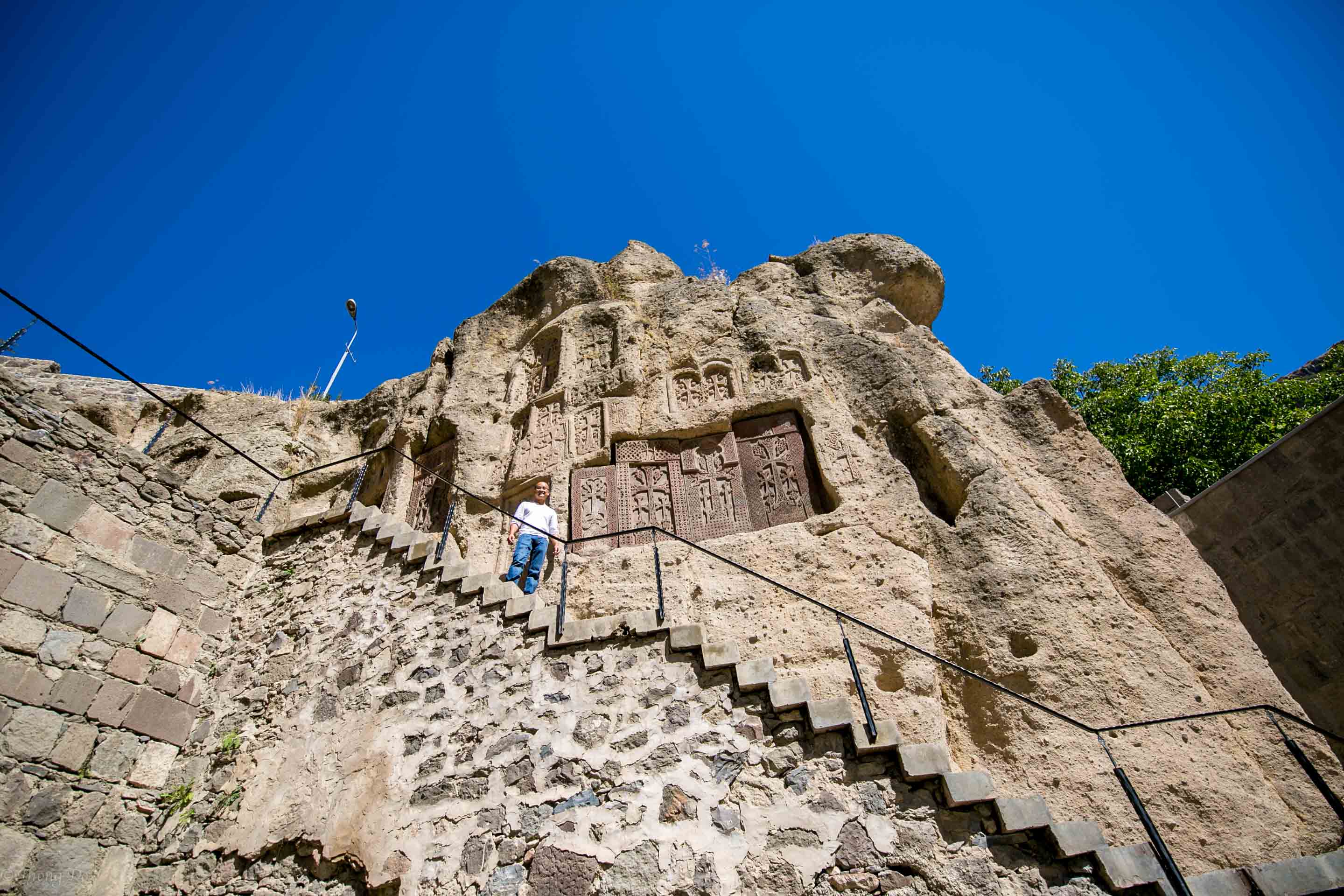
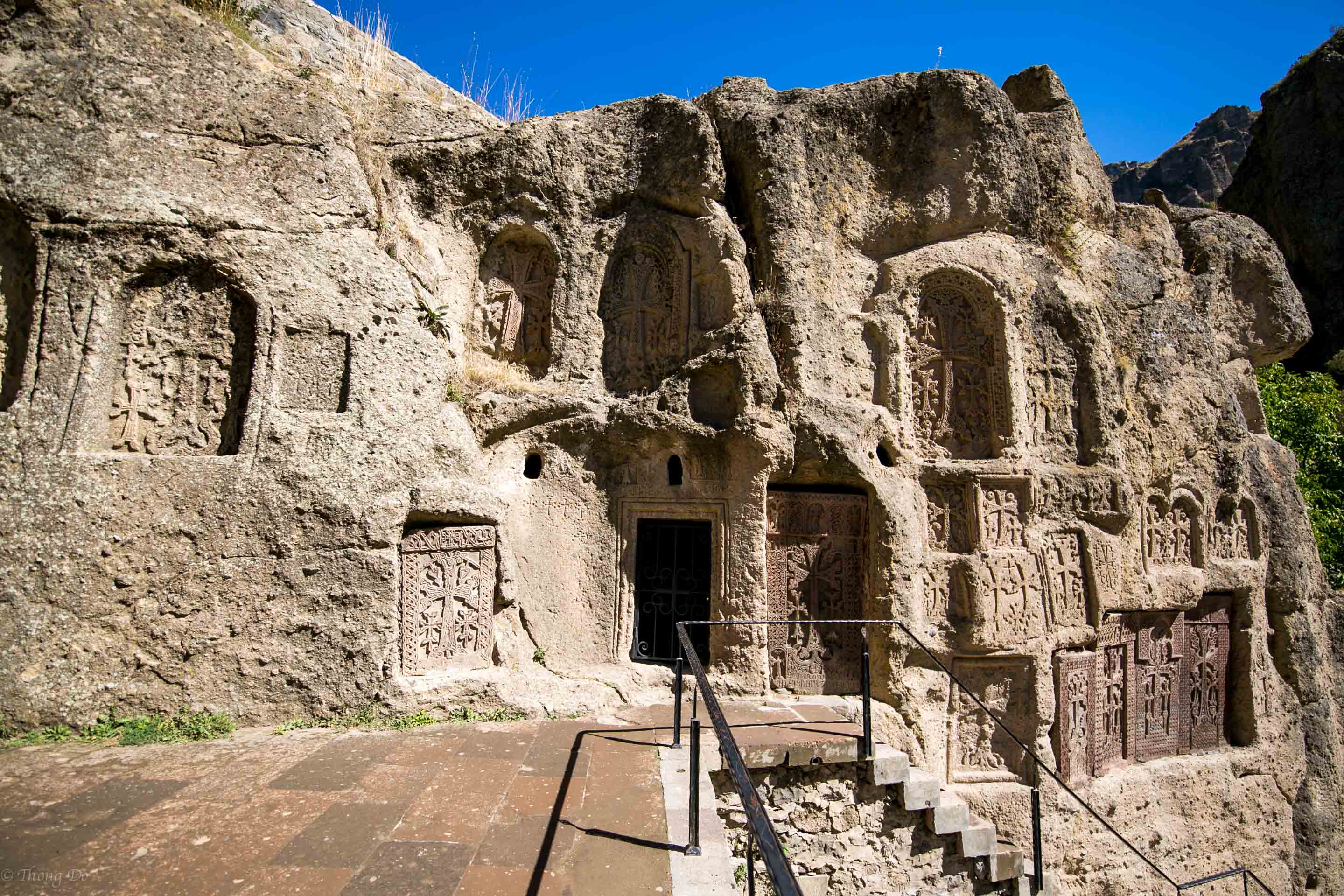
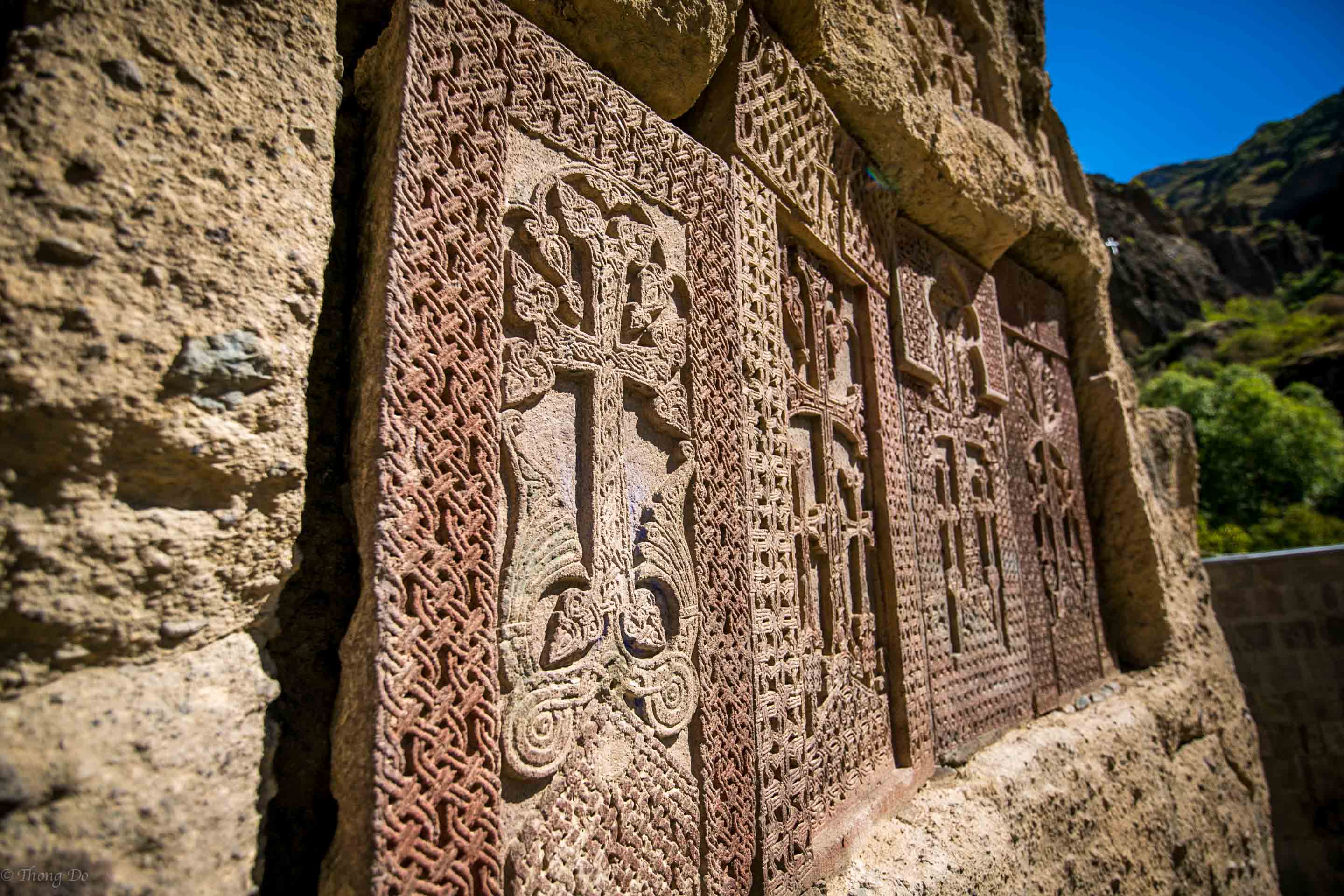
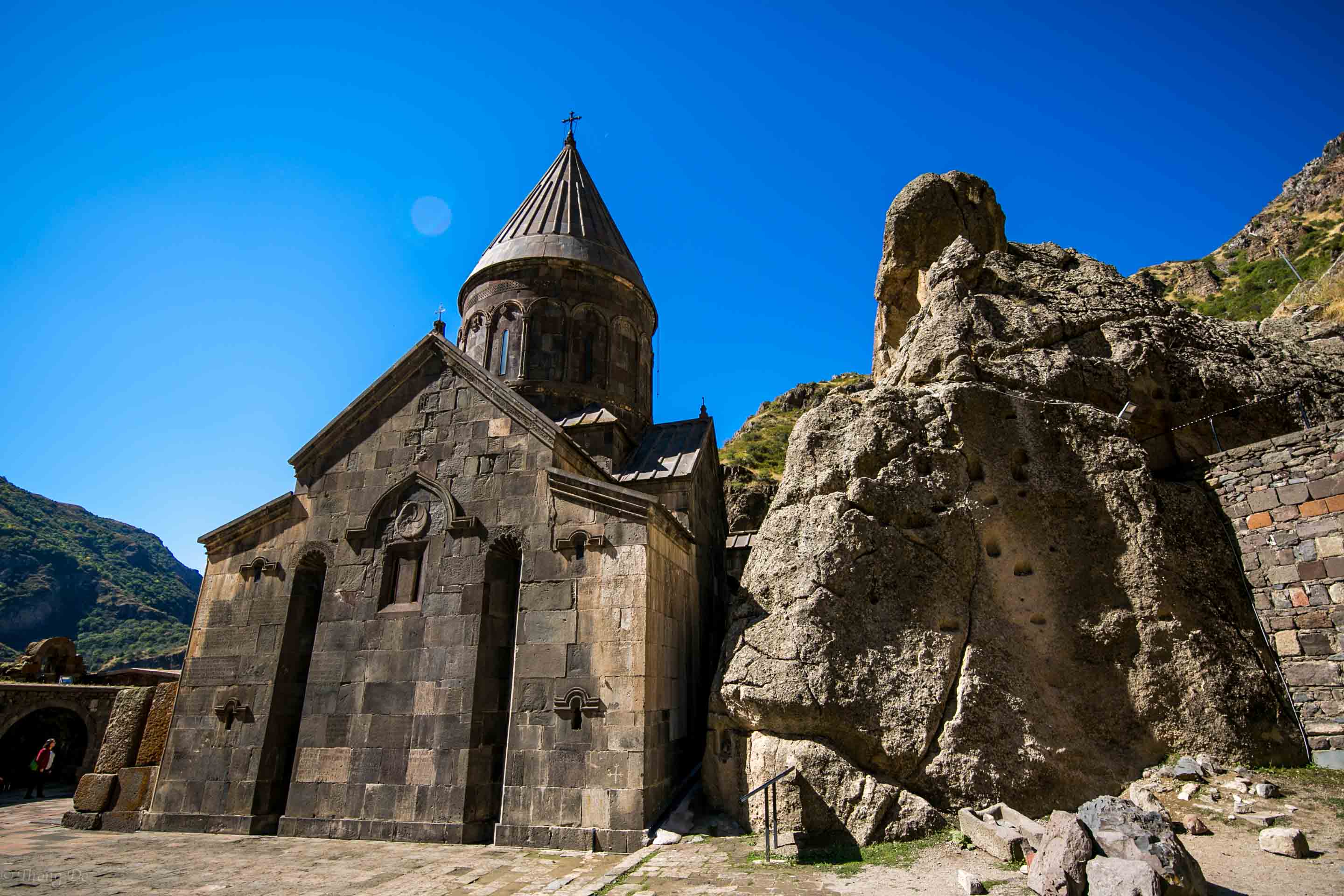
At the entrance of Geghard Monastery there is a stone staircase that will take you up to the side of the mountain where you can see many caves and also get a great view of the surroundings. I managed to hike up there and take some pics with my cell phone. It's quite steep and make sure you have good shoes with traction since there's a lot of loose gravel up there. Sneak inside the ancient caves and see the writing carved into the stone walls.
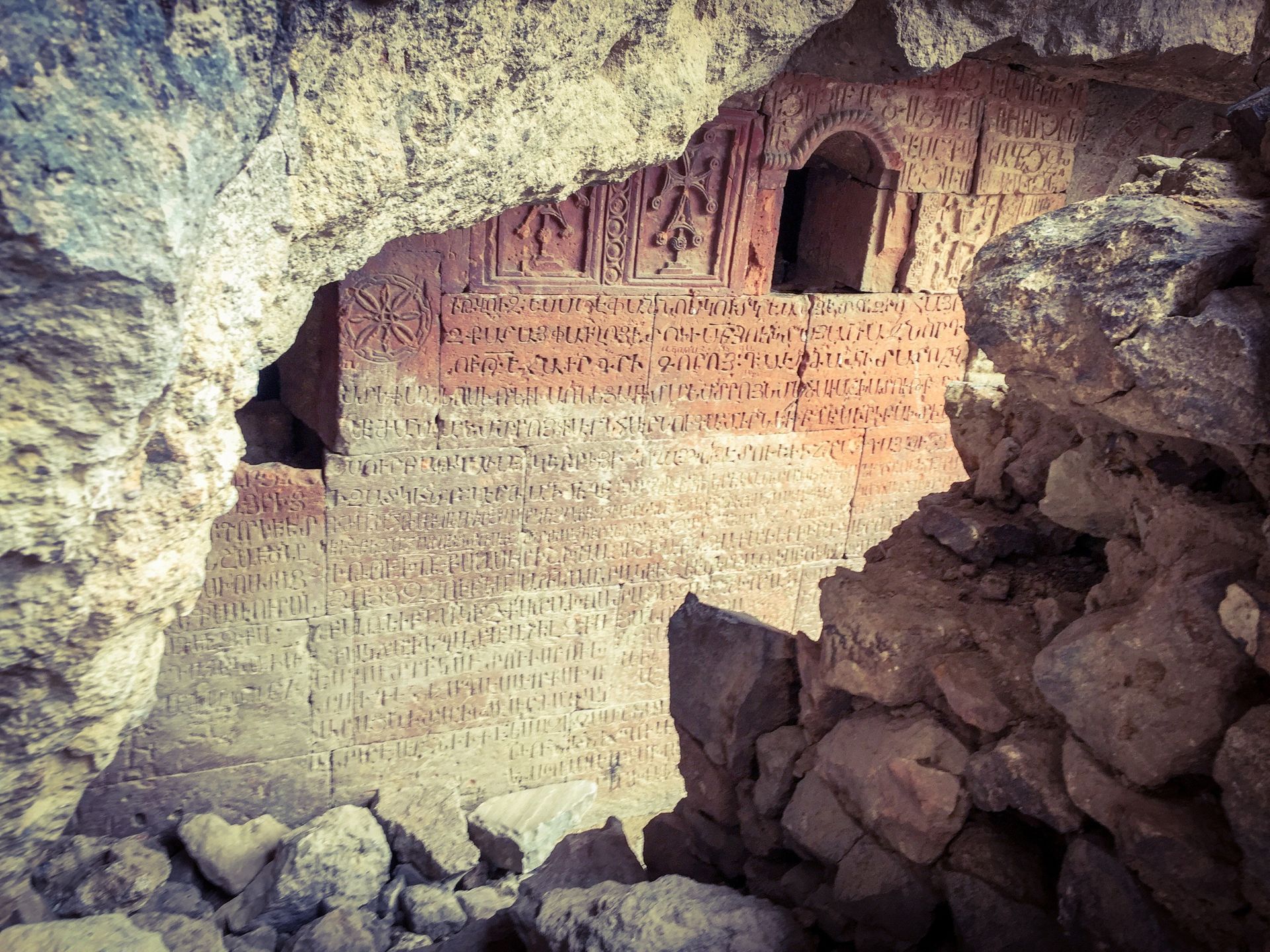
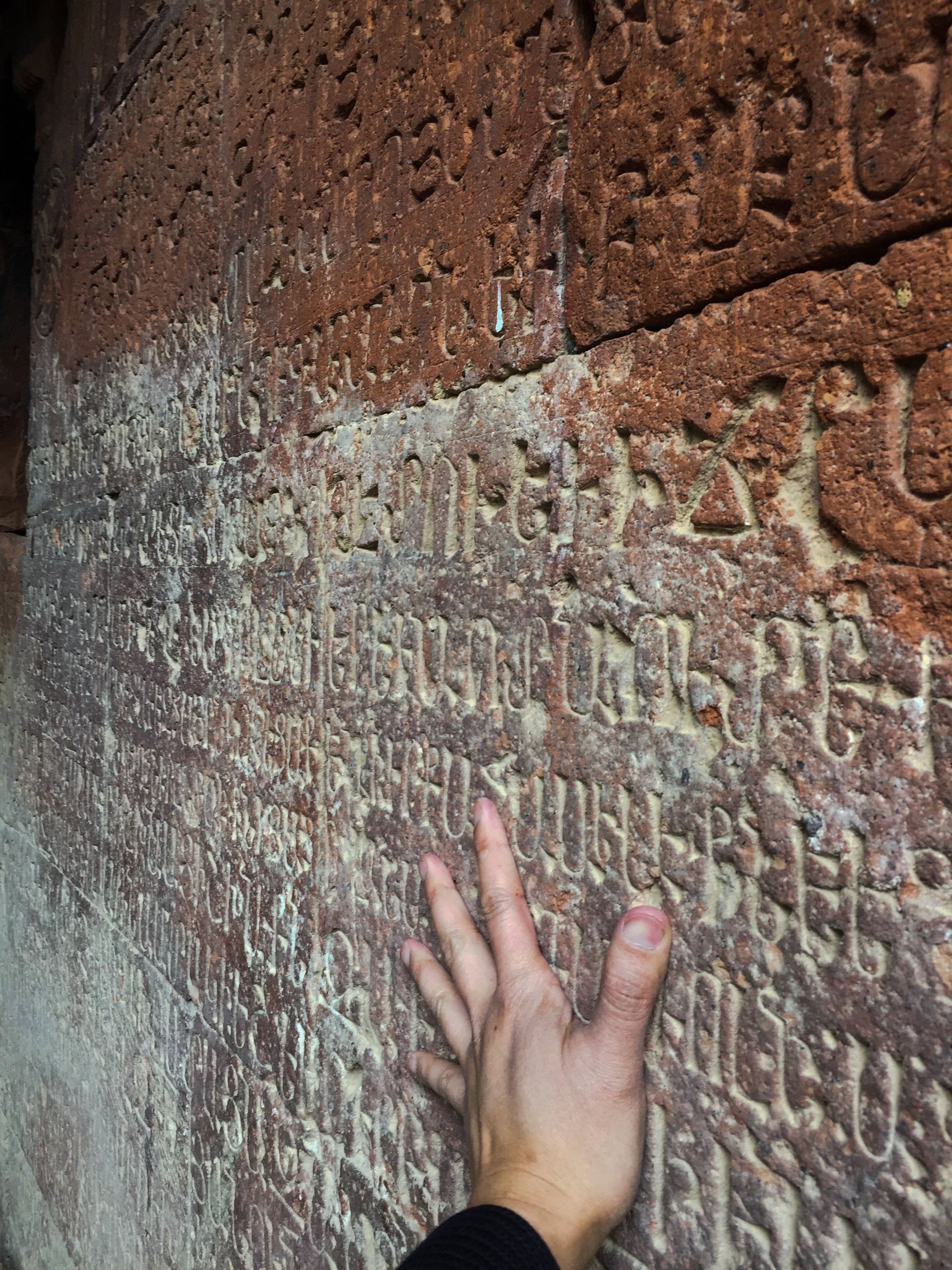
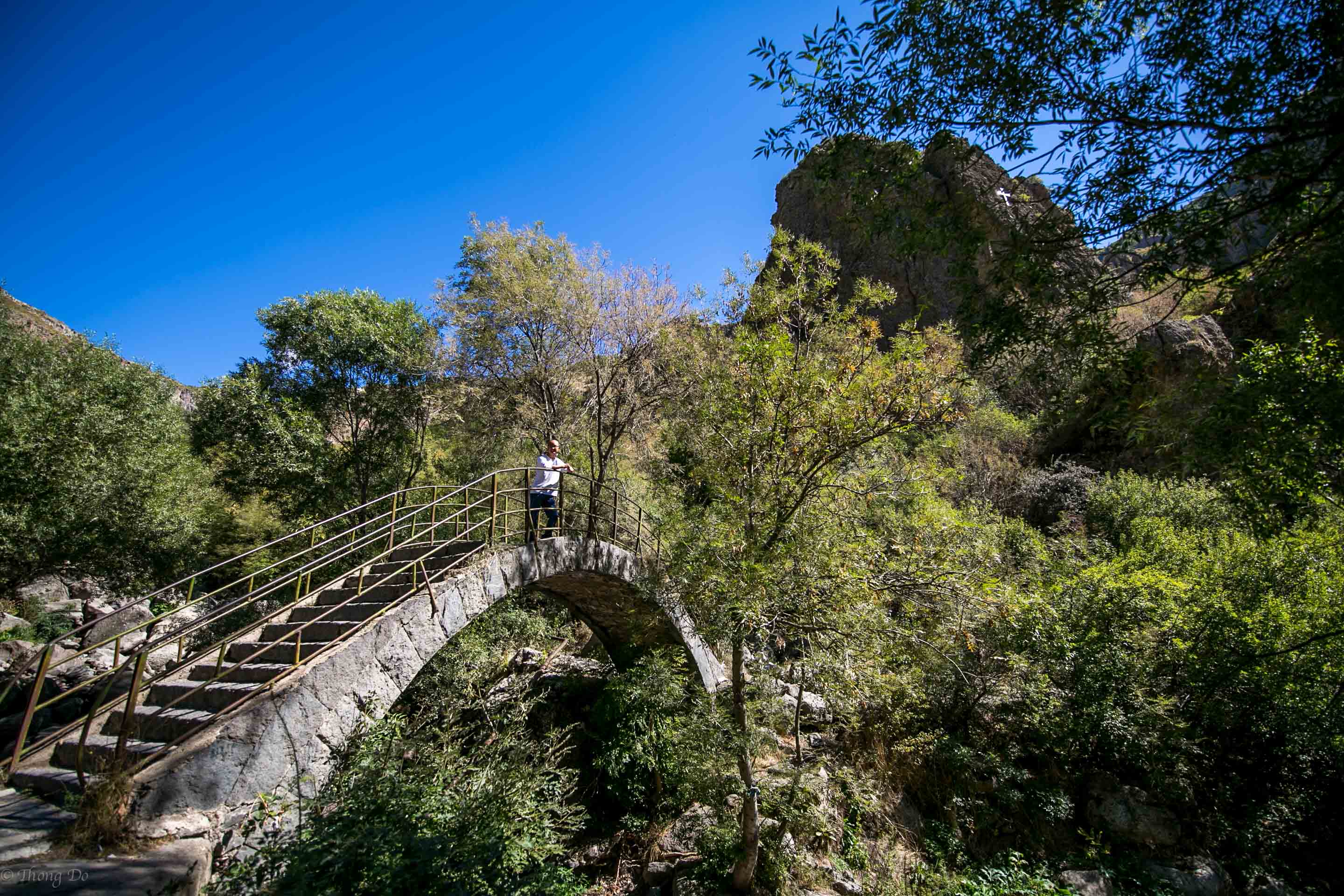
Happy traveling.
